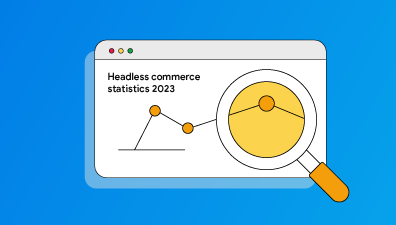Now, for all brands, delivering a seamless and personalized customer journey across multiple platforms has become a priority for businesses striving to stay competitive. This is where omnichannel customer experience (CX) comes into play. Omnichannel customer experience refers to the strategy of providing a cohesive and unified experience for customers, whether they interact with a business through online channels, brick-and-mortar stores, mobile apps, or any other touchpoint. By focusing on the integration and consistency of these various platforms, omnichannel customer experience ensures that customers receive the same level of service, information, and engagement no matter where or how they choose to interact with a brand.
The purpose of this blog post is to showcase some of the best omnichannel customer experience examples from a variety of industries. Additionally, we’ll provide actionable insights and steps for businesses looking to build and optimize their own omnichannel customer experiences. By examining these examples, you’ll gain a clearer understanding of what it takes to deliver a truly seamless, personalized, and impactful omnichannel experience for your customers.
Table of Contents
- Key Components of an Effective Omnichannel Customer Experience
- Unified Customer Data Management: Centralizing customer information for a seamless experience
- Consistency Across Channels: Ensuring a unified brand experience in both physical and digital spaces
- Personalization: How personalized interactions enhance customer satisfaction
- Real-Time Synchronization: The importance of updating customer interactions across channels in real-time
- Customer-Centric Approach: Putting customers at the heart of the strategy
- Integration of AI and Automation: Leveraging AI-driven solutions for a smoother experience
- Omnichannel CX Examples by Industry
- Step-by-Step Guide: How to Build the Best Omnichannel CX
- Step 1: Map Out the Customer Journey
- Step 2: Implement a Unified Customer Data Platform
- Step 3: Focus on Personalization at Every Step
- Step 4: Leverage Technology and Automation
- Step 5: Ensure Consistent Branding and Messaging
- Step 6: Train Your Staff to Deliver Seamless Experiences
- Step 7: Optimize for Mobile
- Tools and Technologies for Enhancing Omnichannel CX
- Challenges and Solutions in Building a Successful Omnichannel CX
Key Components of an Effective Omnichannel Customer Experience
Creating a successful omnichannel customer experience requires more than just offering multiple channels of interaction. It involves integrating those channels into a cohesive system that provides customers with a seamless, personalized, and consistent experience across every touchpoint. In this section, we’ll explore the key components that make up an effective omnichannel customer experience, offering a deep dive into the strategies that help businesses build and maintain strong relationships with their customers.
Unified Customer Data Management: Centralizing customer information for a seamless experience
A critical foundation of an effective omnichannel customer experience is unified customer data management. Centralizing customer data allows businesses to create a single, comprehensive view of their customers across all channels. This means that regardless of where or how a customer interacts with the brand—whether through an online platform, a mobile app, or a physical store—their preferences, purchase history, and behavior are accessible in one place.

When customer data is fragmented across different systems, it leads to inconsistencies in the customer experience. For example, a customer who made an in-store purchase might expect their loyalty points to be updated in the brand’s app. Without a unified data system, this might not happen, resulting in frustration and a break in trust. By centralizing customer data, businesses ensure that all touchpoints reflect the same information, creating a seamless experience that fosters customer loyalty.
Consistency Across Channels: Ensuring a unified brand experience in both physical and digital spaces
Consistency is at the heart of any great omnichannel customer experience. Customers expect the same quality of service, messaging, and branding no matter how they engage with a company. Whether they’re shopping in a physical store, browsing the website, or interacting with the brand on social media, the experience should feel familiar and coherent.
For instance, successful omnichannel customer experience examples like Apple and Sephora demonstrate the power of consistency. Both brands ensure that their digital interfaces and physical stores offer the same aesthetic, language, and level of service. This consistency not only strengthens brand recognition but also builds trust with customers, who know what to expect no matter how they interact with the company.
A consistent omnichannel experience also allows businesses to better meet customer expectations and resolve issues faster, as there are fewer discrepancies between channels. This leads to higher customer satisfaction and retention, which are key drivers of business growth.
Personalization: How personalized interactions enhance customer satisfaction
Personalization is one of the most powerful tools for improving the omnichannel customer experience. By using customer data to tailor interactions, businesses can offer more relevant products, services, and communications, significantly boosting customer satisfaction.
Successful omnichannel customer experience examples show how personalization can transform interactions. Take Netflix, for example, which curates personalized content recommendations based on user viewing habits across multiple devices. By delivering personalized content consistently, Netflix enhances customer satisfaction and engagement.
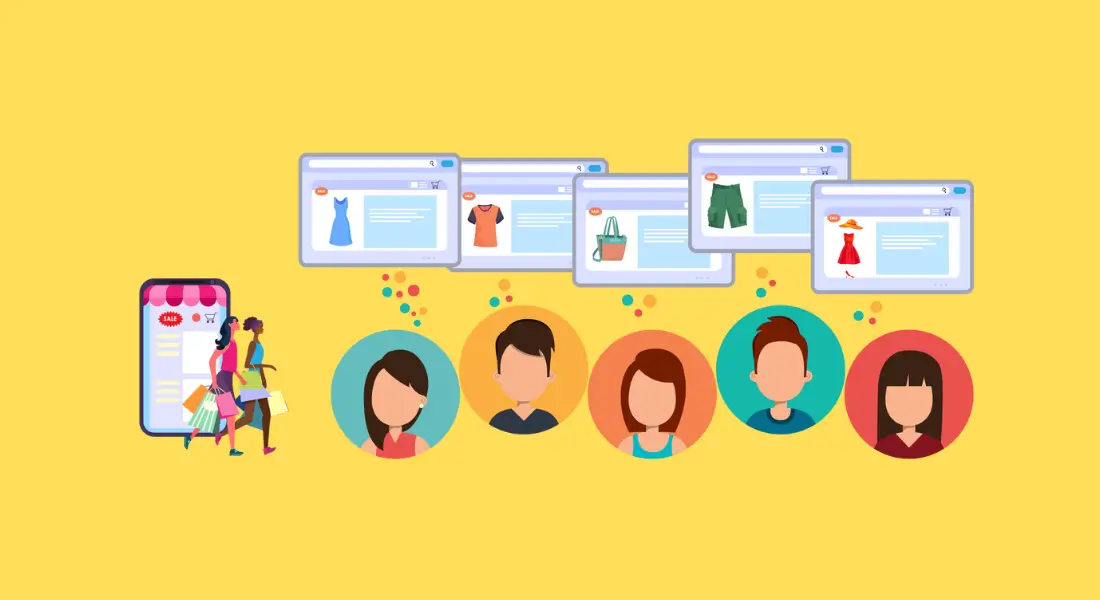
The ability to personalize across channels also extends to marketing campaigns, customer service, and product recommendations, helping businesses create meaningful connections with their customers. When customers feel that a brand understands their preferences and needs, they are more likely to stay loyal, make repeat purchases, and recommend the brand to others.
Real-Time Synchronization: The importance of updating customer interactions across channels in real-time
Real-time synchronization is a key enabler of a seamless omnichannel customer experience. In a world where customers frequently switch between online and offline interactions, keeping customer data and interactions up-to-date in real-time is essential to providing a consistent experience.
For example, a customer might browse products on a mobile app, add items to their cart, and later visit the physical store to complete the purchase. Without real-time synchronization, the store staff might not have access to the customer’s cart or previous interactions, resulting in a disjointed experience. Omnichannel customer experience examples like Walmart demonstrate the importance of real-time synchronization, where customers can start an order online and seamlessly pick it up in-store without any issues.
By implementing real-time data synchronization, businesses can ensure that customer actions are reflected across all channels, reducing friction and enhancing the overall experience.
Customer-Centric Approach: Putting customers at the heart of the strategy
An effective omnichannel customer experience begins with a customer-centric approach. This means putting the needs, preferences, and behaviors of customers at the center of every decision. Instead of focusing solely on business goals, a customer-centric strategy prioritizes creating positive experiences that meet customer expectations and build long-term loyalty.

To achieve this, businesses must actively listen to customer feedback, analyze customer behavior, and continuously optimize the experience across all channels. Omnichannel customer experience examples from brands like Zappos highlight the impact of a customer-centric approach. Zappos is known for its exceptional customer service, where every interaction—whether online or on the phone—is designed to solve problems and enhance customer satisfaction.
A customer-centric approach also involves anticipating customer needs and proactively offering solutions, whether through personalized recommendations or efficient customer support. By making customers the focus, businesses can build stronger relationships and increase brand loyalty.
Integration of AI and Automation: Leveraging AI-driven solutions for a smoother experience
The integration of artificial intelligence (AI) and automation into omnichannel customer experience strategies has revolutionized how businesses interact with their customers. AI allows for advanced data analysis, personalized recommendations, and real-time customer service, while automation streamlines repetitive tasks and improves efficiency.
For example, AI-powered chatbots are now a common feature in omnichannel customer experience examples, helping brands provide instant support to customers across various platforms. These chatbots can handle a wide range of inquiries, from product recommendations to order tracking, ensuring that customers receive timely and accurate assistance.
In addition, AI tools can analyze customer behavior to predict future needs and preferences, enabling businesses to offer more personalized experiences. Automation further enhances this by ensuring that processes such as email campaigns, loyalty program updates, and cart recovery are handled efficiently across all channels. By integrating AI and automation, businesses can create a smoother, more responsive omnichannel customer experience that meets modern customer demands.
These key components—unified customer data management, consistency across channels, personalization, real-time synchronization, a customer-centric approach, and the integration of AI and automation—are the foundation of any successful omnichannel customer experience. By focusing on these elements, businesses can deliver some of the most effective omnichannel customer experience examples, setting the standard for seamless and satisfying customer journeys across all platforms.
Omnichannel CX Examples by Industry
An omnichannel customer experience strategy isn’t a one-size-fits-all solution. Instead, it requires adaptation to the specific needs of different industries, with each sector offering unique opportunities and challenges for businesses to navigate. Successful omnichannel customer experience examples across industries demonstrate the flexibility and creativity that brands can use to offer seamless and personalized customer journeys. In this section, we’ll explore key examples of omnichannel customer experience strategies from various sectors, including retail, eCommerce, financial services, and healthcare, to understand how leading companies have successfully integrated their platforms to meet customer expectations.
Retail
The retail industry has been one of the earliest adopters of omnichannel strategies, driven by customers’ increasing expectations for a seamless experience across physical stores, websites, mobile apps, and other digital channels. Retail businesses have recognized the importance of providing consistent and personalized experiences that allow customers to interact with their brand effortlessly, regardless of the platform they choose. Some of the most successful omnichannel customer experience examples in retail come from companies that have mastered the integration of digital and physical touchpoints.
Starbucks
Starbucks has revolutionized the retail coffee experience with its omnichannel strategy, which integrates the Starbucks Rewards mobile app, in-store experiences, and its loyalty program. Customers can place their orders through the app, skip the line, and pick up their coffee at any Starbucks location, making the process fast, convenient, and personalized. The seamless integration of the app with in-store services and the rewards system keeps customers engaged, ensuring a unified experience across all touchpoints.
Overview of Starbucks’ Omnichannel Strategy: Integration of mobile app, in-store experiences, and loyalty programs.
Starbucks has long been considered a leader in creating a highly effective and innovative omnichannel customer experience. The coffee giant’s strategy revolves around seamlessly connecting its mobile app, in-store experiences, and loyalty program, ensuring customers enjoy a consistent and convenient interaction with the brand no matter where or how they engage. The Starbucks Rewards app is central to this strategy, allowing customers to order ahead, pay, and earn rewards, all while maintaining their engagement with the brand.

Through the Starbucks app, customers can place their orders remotely, customize their drinks, and select a preferred location for pick-up. This eliminates the need to stand in long lines, enhancing convenience and saving time. At the same time, the loyalty program, which is fully integrated into the app, allows users to earn points, access personalized offers, and receive special rewards. This omnichannel approach ensures that no matter how customers engage with Starbucks—whether it’s through the app or in-store—their experience is unified and personalized.
Key CX Features
Several key features contribute to the success of Starbucks’ omnichannel customer experience. The first is seamless ordering. Through the mobile app, customers can place their orders before arriving at the store, which is then synchronized with the in-store system to ensure their orders are ready when they arrive. This minimizes waiting times and enhances customer convenience, particularly during busy hours. Additionally, customers can choose their pick-up locations, giving them control over how and where they receive their orders.
Another essential feature of Starbucks’ omnichannel strategy is its focus on personalized offers. The Starbucks Rewards app uses customer data to tailor promotions and product recommendations based on previous purchases and preferences. By offering personalized discounts and rewards, Starbucks enhances customer satisfaction and loyalty, as customers feel that their individual preferences are being recognized and rewarded.
Moreover, the integration of rewards across channels plays a critical role in retaining customer engagement. Whether customers make purchases through the app or in-store, their loyalty points and rewards are updated in real time, allowing them to redeem their rewards on any platform. This creates a cohesive experience where customers can accumulate and use their rewards seamlessly, further reinforcing their connection to the brand.
Takeaways for Building a Strong Retail Omnichannel CX
Starbucks’ omnichannel customer experience examples offer valuable insights for other retailers looking to implement or improve their omnichannel strategies. The key takeaway is that integration is crucial—Starbucks successfully blends its mobile app, in-store services, and loyalty program into a unified system. This seamless integration allows customers to transition between channels without encountering any disruptions, which is vital for maintaining engagement and satisfaction.
Another lesson from Starbucks is the importance of personalization. By using customer data to offer tailored rewards and product suggestions, Starbucks strengthens its relationship with customers and encourages repeat business. Retailers should focus on leveraging data to deliver personalized experiences that resonate with individual customers.
Finally, convenience should always be a priority in any retail omnichannel strategy. Starbucks’ mobile ordering system is an excellent example of how convenience can enhance the overall customer experience. Retailers can adopt similar strategies, such as enabling online shopping with in-store pick-up or offering mobile payment options, to make the purchasing process as smooth and efficient as possible.
In conclusion, Starbucks’ approach to omnichannel customer experience demonstrates the power of integrating digital tools with physical interactions. By prioritizing seamless transitions between channels, personalized offers, and convenience, Starbucks has set a high standard for what an effective omnichannel retail strategy should look like. Other retailers can learn from these omnichannel customer experience examples to build their own strong and engaging customer journeys across all touchpoints.
Sephora
Sephora has become a leader in the beauty industry by embracing omnichannel innovations that merge digital and in-store experiences. With its mobile app and online platform, customers can browse products, receive personalized recommendations, and virtually try on makeup using augmented reality (AR). The integration of these digital tools with Sephora’s in-store consultations and loyalty program ensures a cohesive experience, allowing customers to engage with the brand through multiple platforms while receiving the same high level of service.
Omnichannel Innovations in the Beauty Industry: Synchronizing in-store, online, and mobile app experiences
Sephora has long been considered a trailblazer in the beauty industry, especially in its approach to delivering a seamless omnichannel customer experience. The brand’s strategy is built on integrating its online store, mobile app, and physical stores to create a unified and consistent shopping experience for its customers. Through this omnichannel approach, Sephora allows its customers to easily transition between digital and physical touchpoints while receiving the same level of personalized service and product engagement across all platforms.
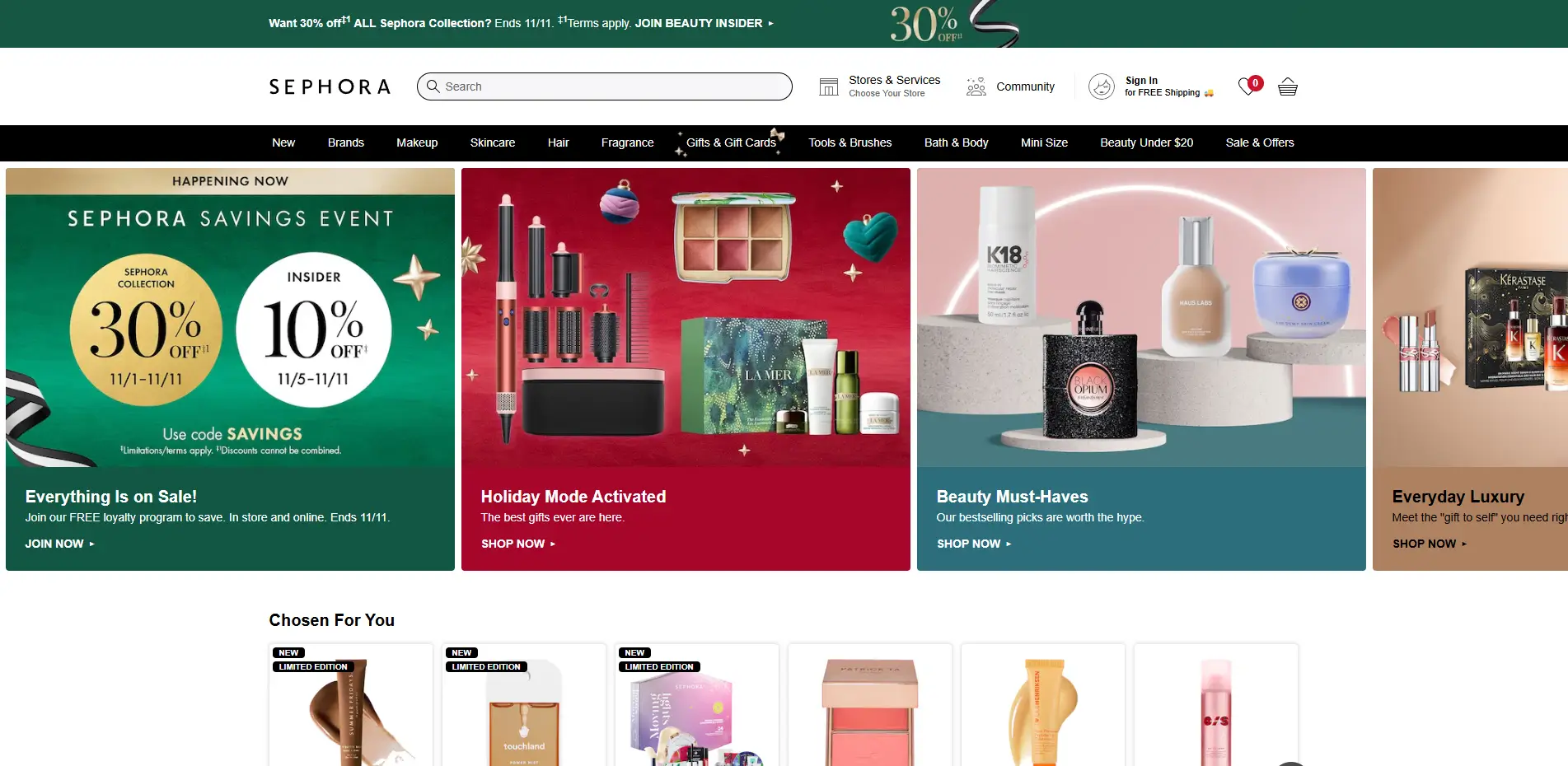
One of the standout elements of Sephora’s omnichannel strategy is the way it leverages technology to enhance both the in-store and online shopping experience. The Sephora app plays a central role in this strategy, acting as a bridge between the online store and physical locations. Customers can use the app to search for products, read reviews, and access personalized recommendations based on their previous purchases and preferences. Additionally, they can use the app to check in-store availability of products and seamlessly transition their online shopping journey to a physical store.
Sephora’s integration of in-store experiences with digital tools is another key innovation in its omnichannel approach. Customers who visit a Sephora store can use the brand’s in-store technology, such as its Virtual Artist tool, to try on makeup digitally before making a purchase. This integration of digital tools into the physical shopping environment creates a more engaging and convenient experience for customers, allowing them to make more informed purchasing decisions.
Key CX Features
Sephora’s omnichannel customer experience examples highlight several key features that contribute to the brand’s success in delivering a seamless and personalized shopping journey.
The first key feature is Sephora’s virtual try-on tools. The Virtual Artist, available through the Sephora app and in select stores, allows customers to virtually try on makeup products like lipstick and eyeshadow by using augmented reality (AR) technology. This tool provides an immersive and interactive shopping experience, enabling customers to experiment with different looks before purchasing. This feature is especially important for online shoppers who may not have the opportunity to test products in-store. By bridging the gap between digital and physical shopping experiences, Sephora ensures that customers feel confident in their purchases, regardless of where they are shopping.
Another important feature of Sephora’s omnichannel strategy is its focus on personalized product recommendations. By using customer data from previous interactions—whether through the website, app, or in-store—Sephora tailors its product recommendations to each individual customer. This level of personalization extends to emails, the mobile app, and the in-store experience, where sales associates can access customer preferences to offer more targeted suggestions. The use of artificial intelligence and data analytics allows Sephora to provide a high level of customization, enhancing customer satisfaction and increasing the likelihood of repeat purchases.
Additionally, Sephora’s loyalty program integration is a key driver of its omnichannel success. The Sephora Beauty Insider program is fully integrated across all of Sephora’s platforms, allowing customers to earn and redeem points whether they shop online, via the app, or in-store. The program’s seamless integration ensures that customers are always rewarded for their engagement with the brand, regardless of the channel they use. This not only strengthens customer loyalty but also encourages cross-channel shopping, as customers can seamlessly switch between platforms without losing track of their points or rewards.
Lessons for Omnichannel Success in Retail
Sephora’s omnichannel customer experience examples provide several valuable lessons for other retailers aiming to build a strong omnichannel strategy.
First and foremost, technology integration is crucial. Sephora’s use of digital tools, such as virtual try-on technology and personalized recommendations, enhances the customer experience by offering convenience and interactivity. By incorporating these tools into both the online and in-store shopping experience, Sephora ensures that customers can enjoy a seamless and consistent experience across all platforms. Retailers should explore similar technologies that can improve customer engagement and bridge the gap between digital and physical experiences.
Another key takeaway is the importance of personalization. Sephora’s ability to use customer data to deliver tailored recommendations across all touchpoints plays a critical role in its omnichannel success. Personalization not only improves the shopping experience by offering relevant product suggestions but also builds trust and loyalty, as customers feel that the brand understands their unique needs. Retailers should prioritize collecting and analyzing customer data to provide more customized experiences, both online and in-store.
Lastly, loyalty program integration is a powerful tool for encouraging cross-channel engagement. Sephora’s Beauty Insider program is an excellent example of how a well-designed loyalty program can drive customer retention and increase sales. By allowing customers to earn and redeem points across channels, Sephora incentivizes customers to shop through multiple platforms, creating a more connected and engaging experience. Retailers looking to implement or improve their omnichannel strategies should consider how they can integrate loyalty programs into all customer interactions, ensuring that customers are consistently rewarded for their brand loyalty.
In conclusion, Sephora’s omnichannel strategy demonstrates the potential for retailers to create immersive, personalized, and unified shopping experiences. By leveraging cutting-edge technology, focusing on personalization, and integrating a robust loyalty program, Sephora has set the standard for omnichannel customer experience examples in the retail industry. Retailers aiming to emulate this success should focus on developing similar strategies that seamlessly connect their digital and physical platforms, providing customers with a consistent and enjoyable journey across all touchpoints.
eCommerce
In the eCommerce industry, creating a seamless and integrated customer experience across various digital and physical platforms is key to success. Customers expect a unified shopping experience whether they are browsing a website, using a mobile app, or engaging through voice assistants. Leading eCommerce brands like Amazon and Walmart have set the standard with innovative omnichannel customer experience examples that seamlessly connect online and offline interactions. Their strategies highlight the importance of synchronization, personalization, and convenience in building an effective omnichannel approach.
Amazon
Amazon’s omnichannel strategy is at the core of its dominance in eCommerce, providing customers with a seamless experience across its website, mobile app, and Alexa voice assistant. Whether shopping online, using voice commands, or receiving product recommendations, Amazon offers customers a consistent and personalized experience. Its ability to synchronize data across all platforms enables customers to start a transaction on one device and complete it on another, making Amazon one of the most effective omnichannel customer experience examples in the eCommerce industry.
Amazon’s Approach to Omnichannel CX: Synchronization of online platforms, apps, and Alexa voice assistants.
Amazon is a global leader in eCommerce, known for its unmatched ability to deliver a highly personalized and convenient customer experience. The core of Amazon’s omnichannel customer experience strategy is synchronization across its various platforms, including its website, mobile app, and voice assistant, Alexa. This synchronization ensures that customers receive a consistent experience, no matter which channel they use to interact with the brand.
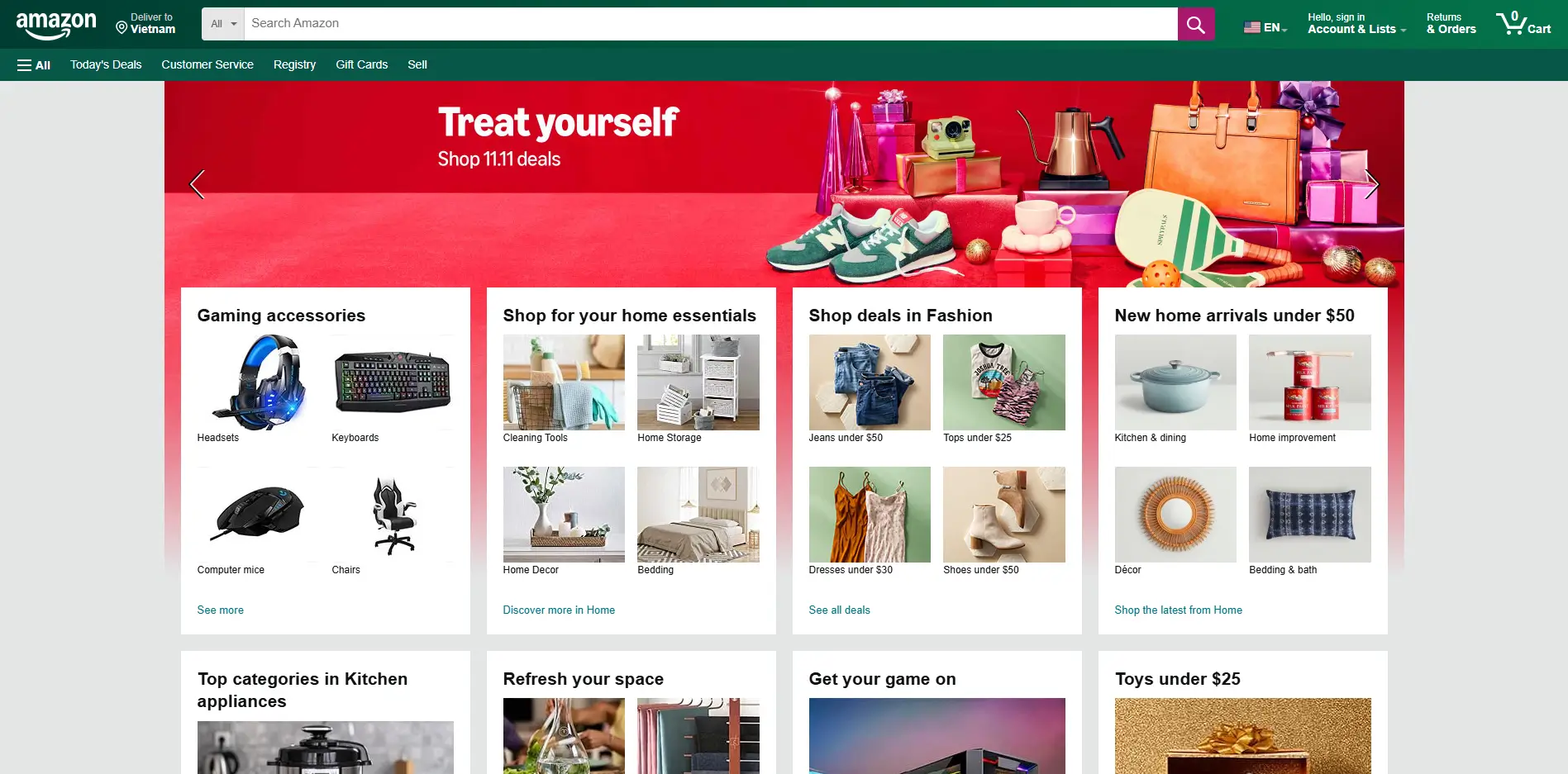
For example, a customer can start searching for a product on Amazon’s website, add it to their shopping cart via the mobile app, and complete the purchase through Alexa’s voice shopping feature, all without any disruptions or loss of information. This seamless transition between platforms provides an unparalleled level of convenience, making the shopping process more efficient and personalized. Amazon’s omnichannel strategy revolves around connecting its digital channels with innovative technologies, such as AI and voice recognition, to provide customers with more flexible and engaging shopping experiences.
Key CX Features
Amazon’s success as one of the top omnichannel customer experience examples can be attributed to several key features:
- Seamless checkout: Amazon’s one-click checkout process allows customers to complete purchases with minimal effort. The system remembers customer preferences, payment methods, and shipping addresses across all platforms, enabling a smooth and hassle-free checkout experience, whether through the website, app, or Alexa.
- Product recommendations: Personalization plays a significant role in Amazon’s omnichannel strategy. By analyzing customer behavior, purchase history, and browsing patterns, Amazon delivers highly targeted product recommendations on every platform. These recommendations are consistent across the website, app, and even voice interactions with Alexa, ensuring that customers receive relevant suggestions regardless of how they choose to shop.
- Voice shopping: Amazon’s integration of Alexa as a shopping assistant has revolutionized the omnichannel customer experience. Through voice shopping, customers can ask Alexa to add items to their cart, check on order statuses, and even make purchases. This level of convenience and interactivity enhances customer engagement, making the shopping experience more intuitive and efficient.
Key Strategies to Adapt for Other eCommerce Brands
Amazon’s omnichannel customer experience examples offer valuable insights for other eCommerce brands aiming to create a seamless and efficient shopping journey. The first key strategy is to focus on synchronization across platforms. Ensuring that customer data, such as shopping cart contents, preferences, and order histories, is synchronized in real-time across channels can significantly enhance the user experience.
Another crucial strategy is to prioritize personalization. Amazon’s use of data analytics to offer personalized product recommendations and promotions has been a major factor in its success. eCommerce brands should invest in technologies like AI and machine learning to analyze customer behavior and deliver personalized experiences across all platforms.
Finally, integrating voice technology is becoming increasingly important in omnichannel strategies. As voice shopping grows in popularity, offering customers the ability to make purchases, ask questions, and track orders through voice assistants can differentiate a brand and provide a more convenient shopping experience.
Walmart
Walmart has successfully blended digital and physical shopping experiences through its omnichannel strategy, offering customers the flexibility to shop online, use its mobile app, or visit stores. Walmart’s real-time inventory tracking allows customers to check product availability at local stores, while its pickup services and Walmart+ membership program enhance the overall experience by combining the benefits of eCommerce with the convenience of in-store services. This integrated approach ensures that Walmart customers can shop how and when they prefer, with a seamless transition between platforms.
Blending Physical and Digital Experiences: Pickup services, eCommerce platform, and Walmart+ membership integration.
Walmart is another prime example of how an eCommerce brand can successfully blend physical and digital experiences to create a seamless omnichannel customer experience. As both a retail giant and a growing eCommerce player, Walmart has focused on integrating its in-store services with its online platform to provide customers with greater flexibility and convenience.
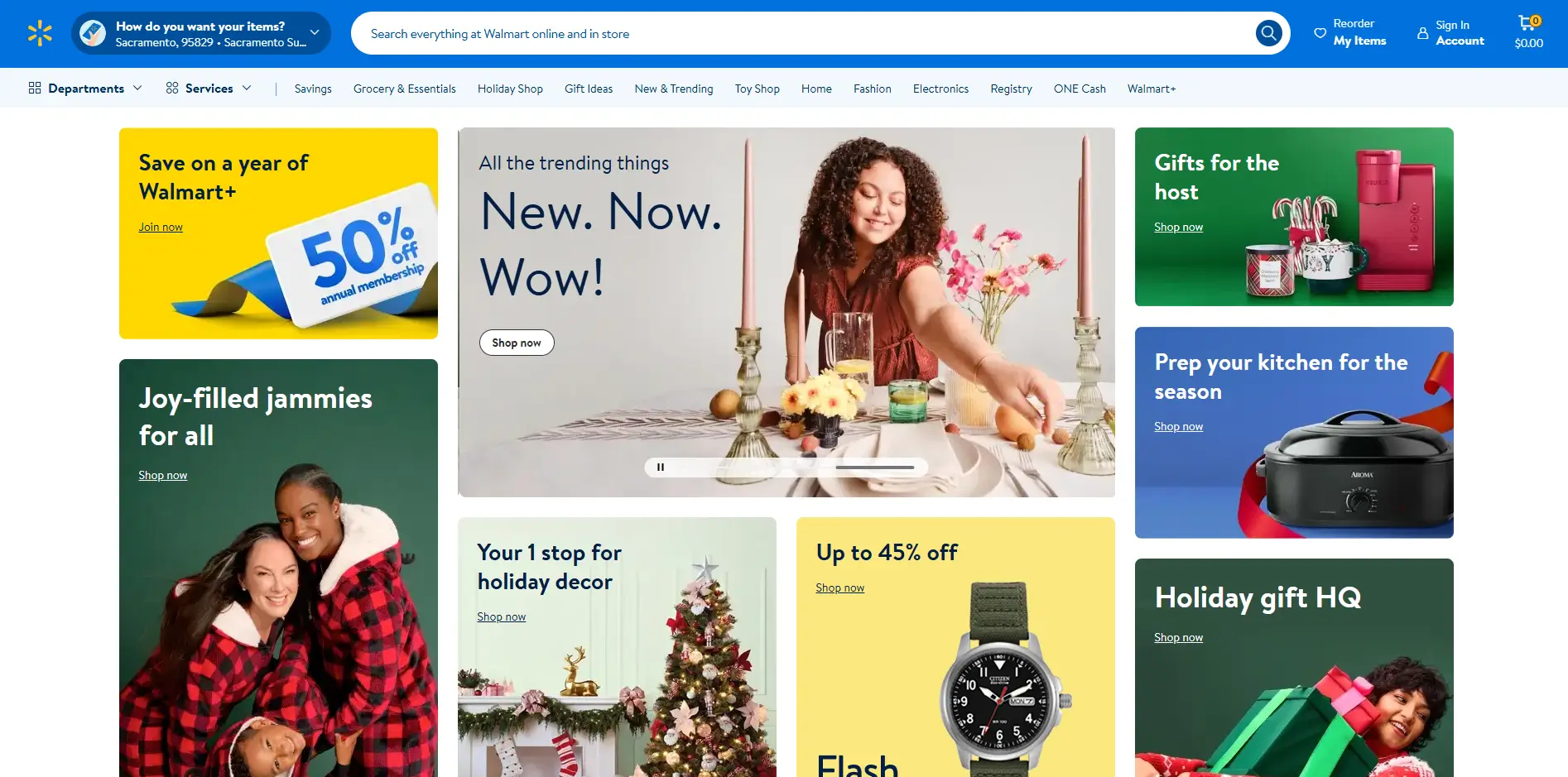
One of the standout features of Walmart’s omnichannel strategy is its pickup services, which allow customers to place orders online and pick them up at their local Walmart store. This integration between the physical and digital worlds enables customers to enjoy the convenience of online shopping with the immediacy of in-store pickup. The ability to select and purchase items online and pick them up the same day from a nearby location is a powerful example of how Walmart has leveraged its physical stores as part of its omnichannel approach.
Walmart’s Walmart+ membership program further enhances the omnichannel customer experience by offering a range of benefits across both online and in-store shopping. Members receive free delivery, fuel discounts, and access to Walmart’s mobile app for quick and convenient shopping. This integration of membership benefits into all shopping channels ensures that Walmart+ customers enjoy a unified experience no matter how they engage with the brand.
Key CX Features
Walmart’s omnichannel customer experience is built around several key features that provide customers with an easy and consistent shopping journey:
- Mobile app experience: Walmart’s mobile app is a cornerstone of its omnichannel strategy. Customers can browse products, place orders for home delivery or in-store pickup, and even use the app for self-checkout in physical stores. The app provides a consistent user experience, with features like personalized product suggestions and the ability to track orders in real-time, enhancing the overall customer experience.
- Real-time inventory tracking: One of Walmart’s standout omnichannel features is real-time inventory tracking. Customers can check product availability at their local stores through the app or website, ensuring that they can make informed purchasing decisions. This feature reduces friction in the shopping process, as customers can quickly determine if an item is available for pickup or delivery.
- Seamless returns across channels: Walmart’s omnichannel strategy also extends to the return process, which is streamlined and hassle-free. Customers can return items purchased online to any Walmart store, providing flexibility and convenience. By making the returns process as easy as possible across channels, Walmart enhances customer satisfaction and encourages repeat business.
Takeaways for eCommerce Businesses
Walmart’s omnichannel customer experience examples offer several important takeaways for other eCommerce businesses. First, blending physical and digital experiences can create a more flexible and convenient shopping journey. Retailers with brick-and-mortar locations should explore ways to integrate in-store services, such as pickup and returns, with their eCommerce platform to offer customers more choices in how they shop and receive their products.
Another takeaway is the value of mobile app optimization. Walmart’s app is a key touchpoint in its omnichannel strategy, and its user-friendly interface and comprehensive features help bridge the gap between online and in-store experiences. Investing in a robust and well-designed mobile app can significantly improve the customer experience by making it easier to shop, track orders, and access personalized offers.
Lastly, real-time inventory tracking and seamless returns are critical components of an effective omnichannel strategy. Providing customers with accurate, real-time information about product availability, as well as offering flexible return options, can reduce frustration and build trust. eCommerce brands that prioritize these features are better positioned to deliver a smooth and consistent customer experience across all channels.
Financial Services
The financial services industry has witnessed a significant shift towards creating seamless and integrated experiences across digital and physical channels. As customers demand greater convenience and flexibility, banks and financial institutions are increasingly adopting omnichannel strategies to meet these needs. Omnichannel customer experience examples in the financial sector highlight how major players like Bank of America and Citibank are leveraging technology to synchronize mobile apps, ATMs, and in-branch services to offer a consistent and personalized experience. By providing customers with multiple touchpoints, these institutions enhance engagement and build trust.
Bank of America
Bank of America has taken a holistic approach to omnichannel customer experience by integrating its mobile banking app, ATMs, and in-branch services into one cohesive system. Customers can manage their accounts, deposit checks, and speak with financial advisors, all while enjoying a consistent experience across channels. With the addition of Erica, its AI-driven virtual assistant, Bank of America offers personalized financial advice and support, providing customers with a unified and convenient banking experience.
Financial Services Omnichannel CX Approach: Integrating mobile banking apps, ATMs, and in-branch experiences.
Bank of America is a leading example of how financial institutions can successfully integrate multiple platforms to create a seamless omnichannel customer experience. The bank has developed a cohesive strategy that connects its mobile banking app, ATM network, and in-branch services, ensuring that customers can access their financial services effortlessly, no matter where they are. This integration is designed to provide customers with a unified experience, allowing them to switch between digital and in-person interactions without losing continuity.
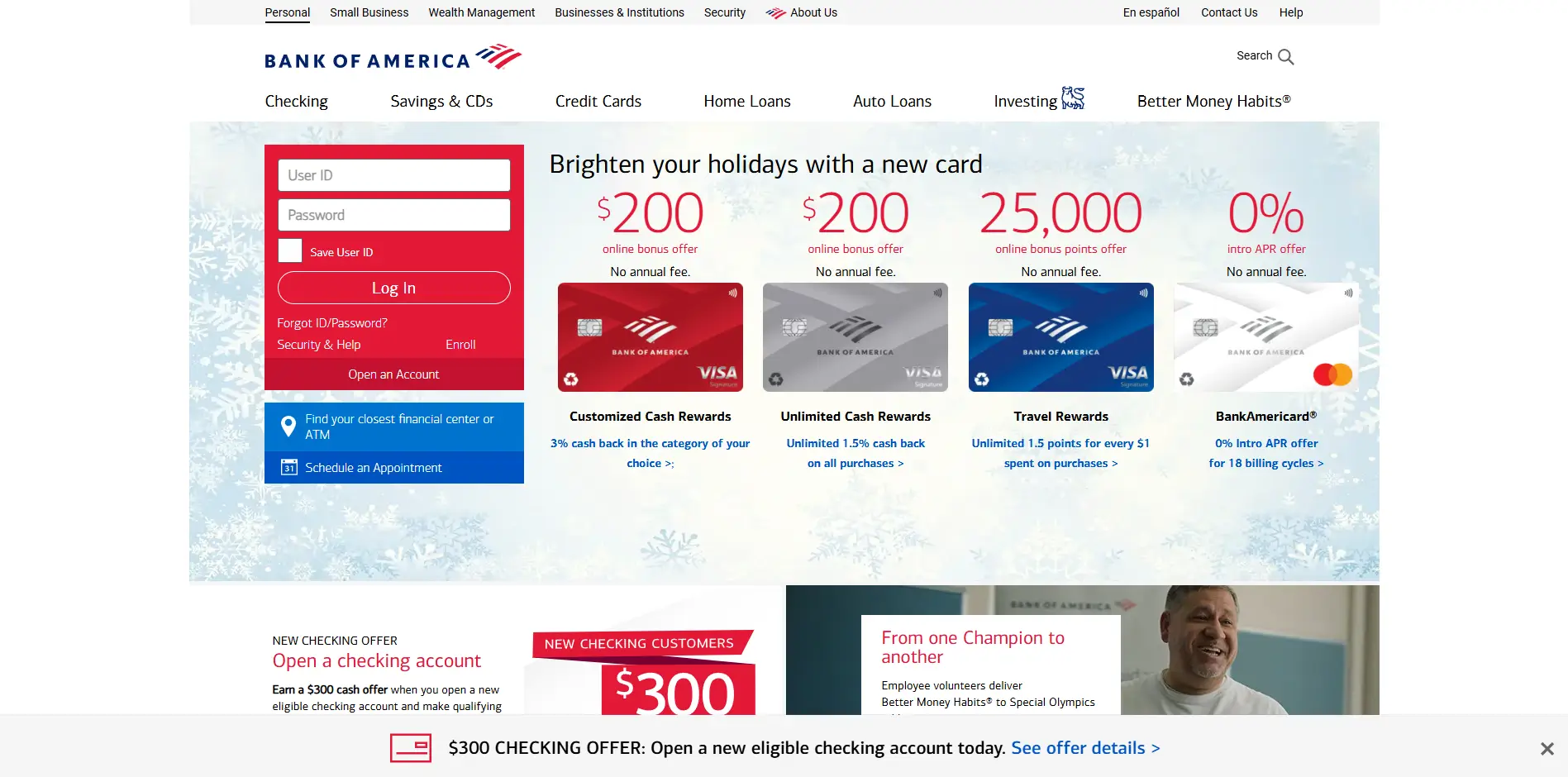
For instance, a customer can check their account balance on the Bank of America mobile app, withdraw cash from an ATM, and then visit a branch to discuss a loan—all while experiencing the same level of service and having access to their financial data. This omnichannel approach ensures that customers receive consistent support across all touchpoints, making it easier for them to manage their finances in a way that suits their lifestyle.
Key CX Features
Bank of America’s omnichannel customer experience examples are built around several key features that provide a consistent and convenient experience for their customers.
First, the integration of services across digital platforms and physical locations allows customers to perform a wide range of banking activities seamlessly. Whether customers are depositing checks through the mobile app, withdrawing cash at an ATM, or consulting a financial advisor in person, the process is streamlined and synchronized. Bank of America ensures that all platforms communicate with one another, so customers’ transactions and interactions are updated in real-time across the system.
Another key feature is the personalized customer service that Bank of America provides across channels. For example, the bank’s mobile app is equipped with Erica, an AI-powered virtual assistant that helps customers manage their accounts, track spending, and find relevant financial information. This personalized service extends to in-branch interactions, where staff can access a customer’s digital transaction history to offer tailored advice.
What Financial Institutions Can Learn from Bank of America’s Approach
Bank of America’s omnichannel customer experience examples offer several important lessons for other financial institutions looking to enhance their customer experience. First and foremost, integration across platforms is critical. By connecting mobile apps, ATMs, and branches into a single, unified system, Bank of America ensures that customers can transition between channels without any friction. Financial institutions should focus on creating a seamless connection between their digital and physical platforms, so customers can access services anytime, anywhere.
Another key takeaway is the importance of consistency in service delivery. Bank of America provides a consistent level of service across all touchpoints, ensuring that customers can manage their finances through the channel that is most convenient for them. This not only improves customer satisfaction but also builds trust, as customers know they will receive the same quality of service no matter how they interact with the bank.
Finally, personalization is crucial to creating an engaging omnichannel experience. By using AI tools like Erica and equipping in-branch staff with customer data, Bank of America ensures that each customer receives personalized financial advice and support. Financial institutions should invest in technologies that allow for personalized interactions, which can strengthen customer relationships and drive long-term loyalty.
Citibank
Citibank’s omnichannel strategy focuses on offering seamless financial services across multiple devices, allowing customers to access their accounts through desktops, smartphones, tablets, and ATMs. The synchronization of transactions in real-time enables customers to start a process on one device and continue it on another, making banking more flexible and convenient. Citibank also leverages AI-driven tools to offer personalized financial insights and real-time customer support, ensuring a high-quality experience across all touchpoints.
Omnichannel Innovations in Banking: Multi-device functionality and personalized interactions.
Citibank has also embraced omnichannel customer experience strategies, focusing on providing a seamless and personalized banking experience across multiple devices. Citibank’s approach to omnichannel customer experience is centered around ensuring that customers can access their accounts and financial services from any device, whether it’s a smartphone, tablet, desktop, or ATM. This level of flexibility allows customers to manage their finances in a way that fits their needs, whether they are on the go or at home.
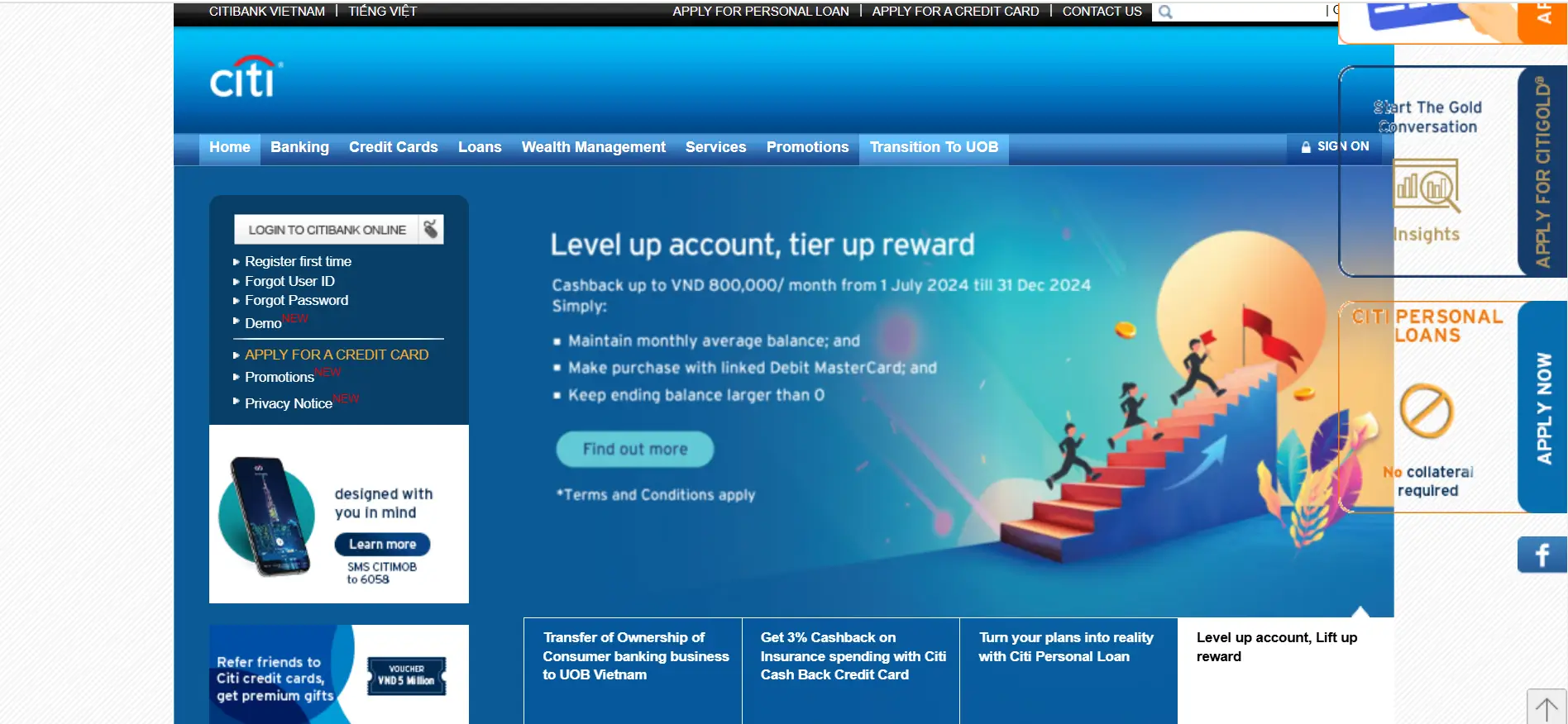
One of Citibank’s most notable innovations is its use of multi-device functionality, which allows customers to start a transaction on one device and complete it on another. For example, a customer could begin applying for a loan on their desktop computer, pause, and then resume the application process on their mobile phone later in the day. This seamless experience across devices is a key component of Citibank’s omnichannel strategy, ensuring that customers never have to repeat steps or lose information during their interactions.
Key CX Features
Several key features define Citibank’s omnichannel customer experience examples, and they offer valuable insights into how financial institutions can create a seamless and engaging customer journey.
One of Citibank’s standout features is its real-time customer service, available across all platforms. Whether customers are using the mobile app, website, or in-branch services, they have access to live customer support that can assist with transactions, troubleshoot issues, or offer financial advice. Citibank’s real-time support ensures that customers receive timely assistance no matter how they choose to interact with the bank.
Another important feature is omni-device support, which allows customers to seamlessly switch between devices without interrupting their banking activities. Citibank’s platforms are fully integrated, ensuring that transactions and interactions are updated in real-time across all devices. This flexibility provides customers with greater control over how and when they manage their finances, making the banking experience more convenient and user-friendly.
Citibank also uses AI-driven account insights to enhance the customer experience. Through the bank’s mobile app, customers receive personalized financial insights and recommendations based on their transaction history and spending patterns. These AI-driven insights help customers make more informed decisions about their finances, and the personalized nature of the service adds significant value to the customer experience.
Lessons for Building Seamless CX in Financial Services
Citibank’s omnichannel customer experience examples highlight several key strategies that other financial institutions can adopt to create a more seamless and engaging experience for their customers.
First, multi-device functionality is a crucial element of any successful omnichannel strategy. Citibank’s ability to provide a consistent experience across devices ensures that customers can manage their finances without disruption, regardless of the platform they use. Financial institutions should focus on creating seamless transitions between devices, allowing customers to start and complete transactions on their preferred channels.
Second, real-time customer service is essential for maintaining a high level of customer satisfaction. Citibank’s omnichannel strategy prioritizes live support across all platforms, ensuring that customers can resolve issues quickly and efficiently. Offering real-time support, whether through chatbots, phone lines, or in-person interactions, is key to building trust and keeping customers engaged.
Lastly, AI-driven insights can significantly enhance the personalization of the customer experience. Citibank’s use of AI to deliver tailored financial advice and insights helps customers make smarter decisions, improving their overall experience with the bank. Financial institutions should invest in AI tools that analyze customer data to provide personalized recommendations, which can strengthen customer relationships and drive long-term engagement.
Healthcare
In the healthcare industry, the demand for integrated and convenient patient experiences has spurred the adoption of omnichannel strategies. Healthcare providers and pharmacies are utilizing digital tools alongside in-person services to deliver a more cohesive and efficient patient journey. The success of omnichannel customer experience examples in healthcare shows how providers are combining telehealth, online portals, and physical locations to offer seamless care. Major players like Kaiser Permanente and CVS Health exemplify how the healthcare industry can use omnichannel approaches to enhance patient satisfaction and improve care outcomes.
Kaiser Permanente
Kaiser Permanente has pioneered the integration of telehealth services, patient portals, and in-person care in the healthcare industry, making it one of the leading omnichannel customer experience examples in healthcare. Patients can book appointments, access test results, and communicate with healthcare providers through the mobile app or portal, while in-person visits are synchronized with these digital platforms to ensure continuity of care. This approach allows Kaiser Permanente to offer patients a seamless and efficient healthcare experience, both online and offline.
Omnichannel Healthcare Approach: Integration of telehealth services, patient portals, and in-person care.
Kaiser Permanente has been a leader in integrating digital health solutions with traditional in-person care. Its omnichannel approach to healthcare involves a comprehensive integration of telehealth services, patient portals, and in-person visits, ensuring that patients receive continuous and consistent care no matter how they choose to engage. Kaiser Permanente’s strategy enables patients to interact with healthcare providers through multiple channels, such as virtual visits, secure messaging on patient portals, and in-person consultations, all of which are synchronized to offer a seamless healthcare experience.
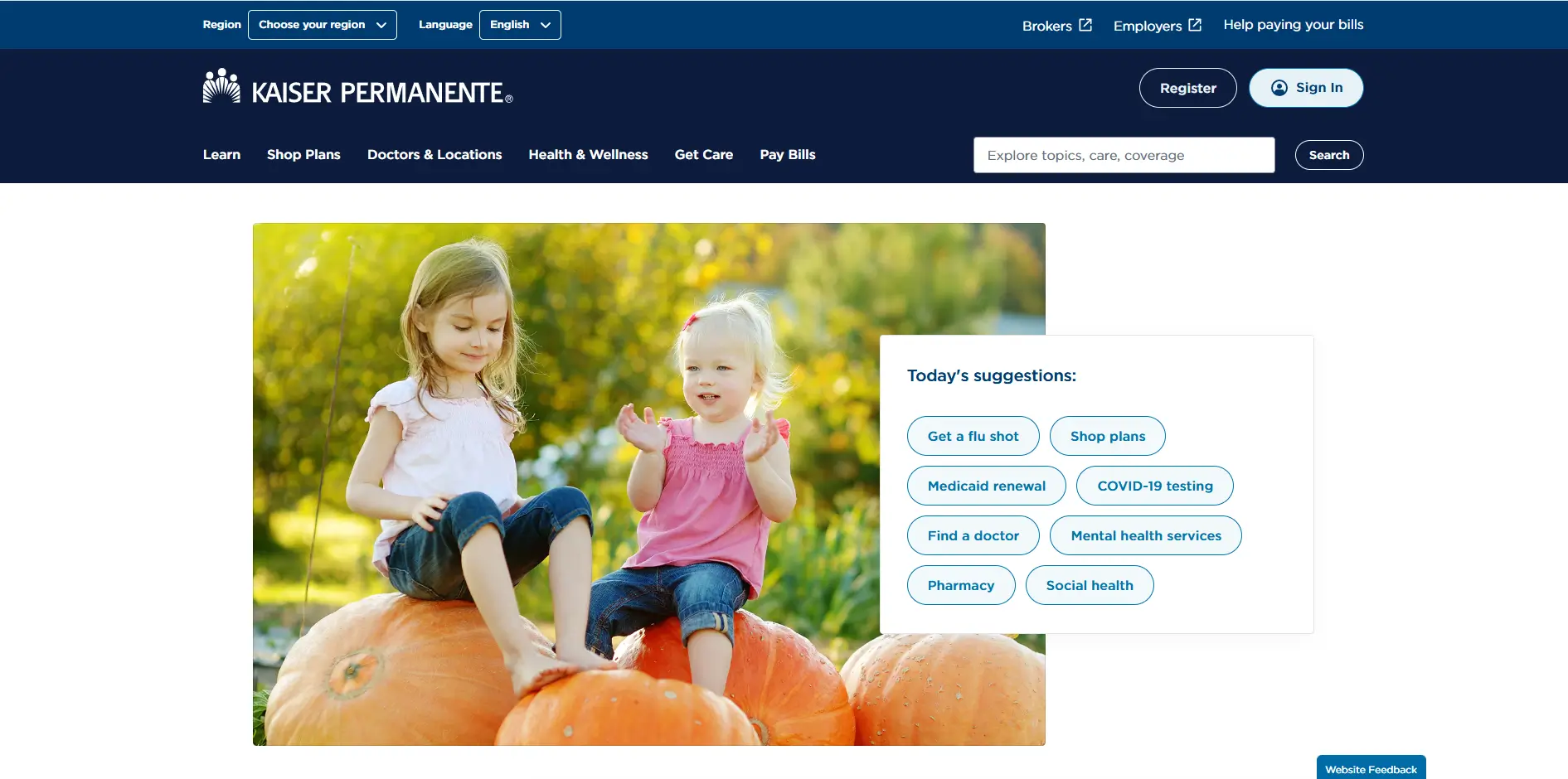
Patients can use the Kaiser Permanente mobile app or online portal to schedule appointments, view test results, communicate with their healthcare providers, and even attend telehealth sessions. For those who require in-person care, appointments booked through digital platforms are synced with physical visits, ensuring that medical records and patient history are accessible to both patients and providers. This level of integration eliminates barriers between digital and in-person care, creating a streamlined experience that enhances patient engagement and satisfaction.
Key CX Features
Kaiser Permanente’s omnichannel customer experience examples are supported by several key features that improve patient care and make healthcare more accessible.
The first key feature is streamlined appointment booking, which allows patients to schedule and manage their appointments through the mobile app or patient portal. This integration offers patients the flexibility to book telehealth sessions or in-person visits at their convenience. Additionally, the system sends automatic reminders to reduce missed appointments and improves the efficiency of healthcare delivery.
Another key feature is the use of personalized care plans that are accessible through digital channels. Patients can view and manage their care plans, prescriptions, and follow-up appointments through the portal or mobile app. These care plans are customized based on patient history, conditions, and treatments, ensuring that each patient receives tailored advice and care recommendations. The ability to access these care plans in real-time improves patient adherence to treatments and fosters a sense of involvement in their own healthcare journey.
Kaiser Permanente also offers real-time patient updates, such as lab results, prescription status, and appointment reminders, through the app and portal. These updates ensure that patients are always informed about their health status, which promotes proactive care management and reduces the need for in-person visits. By providing patients with timely information, Kaiser Permanente enhances the overall patient experience and increases the effectiveness of care.
Building a Seamless Patient Journey Across Healthcare Channels
Kaiser Permanente’s omnichannel customer experience examples demonstrate how healthcare providers can build a seamless patient journey by integrating digital tools with traditional care. The ability to offer telehealth, online appointment scheduling, and real-time updates reduces the friction patients often experience when navigating healthcare systems. By ensuring that patient data and medical records are synchronized across all touchpoints, Kaiser Permanente creates a cohesive experience that helps patients receive the right care at the right time.
For healthcare providers looking to implement omnichannel strategies, it’s important to focus on continuity of care across channels. This involves connecting digital tools, such as telehealth and patient portals, with in-person care in a way that feels natural and cohesive for patients. By doing so, providers can reduce the complexities patients face when switching between digital and physical healthcare services.
CVS Health
CVS Health has adopted an omnichannel approach that combines its digital platforms with its physical pharmacy locations to provide a unified healthcare and pharmacy experience. Customers can manage prescriptions online, receive mobile alerts, and choose between in-store pickup or home delivery. The integration of these digital tools with CVS’s loyalty programs further enhances customer engagement, allowing patients to access essential healthcare services and rewards through multiple channels.
Bringing Omnichannel to Healthcare and Pharmacy: Cross-platform prescription management and health services
CVS Health has also embraced omnichannel strategies to enhance patient care and pharmacy services. As a leading pharmacy chain and healthcare provider, CVS Health integrates online platforms, mobile apps, and physical stores to deliver a unified experience for customers. One of the key elements of CVS Health’s omnichannel approach is its ability to offer cross-platform prescription management, enabling customers to manage their medications online, through the mobile app, or at any CVS location. This flexibility ensures that patients can access their prescriptions easily, no matter how they prefer to engage.
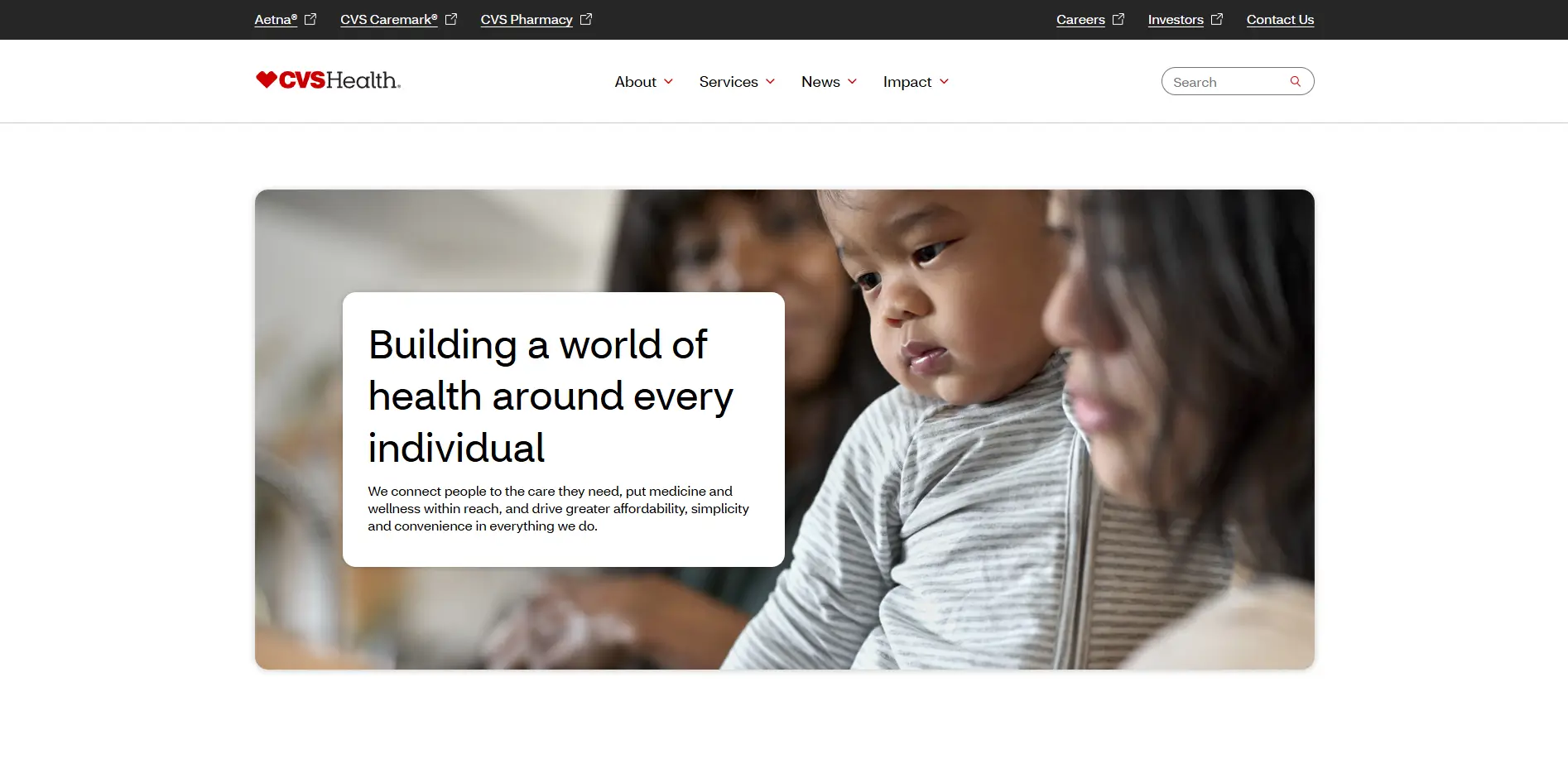
Additionally, CVS Health offers a range of healthcare services, such as vaccinations and health screenings, which can be scheduled and managed through their digital platforms. Customers can use the CVS app or website to book appointments for these services, receive reminders, and even check their eligibility for certain healthcare programs. By connecting its digital services with physical pharmacy locations, CVS Health ensures that patients receive a consistent experience across all channels.
Key CX Features
CVS Health’s omnichannel customer experience examples are defined by several key features that improve convenience and accessibility for patients.
One key feature is the online to in-store prescription services. Customers can refill prescriptions online or through the mobile app and choose whether to pick them up at a CVS location or have them delivered to their home. This level of flexibility allows customers to manage their medications in a way that best suits their needs. Furthermore, the integration between digital platforms and in-store services ensures that prescription records are updated in real time, so customers never face delays in receiving their medications.
Another important feature is mobile alerts, which notify customers when their prescriptions are ready for pickup, when they are due for a refill, or when a healthcare appointment is approaching. These alerts are designed to keep customers informed and help them manage their health more effectively. By providing timely reminders and notifications, CVS Health reduces the likelihood of missed medications or appointments, improving overall patient adherence to treatment plans.
CVS Health also incorporates loyalty programs into its omnichannel experience. Customers who use the CVS app or website can earn rewards for making purchases or filling prescriptions, which they can then redeem in-store or online. The integration of loyalty programs into the omnichannel system encourages customer engagement and fosters long-term loyalty by rewarding patients for their continued use of CVS services.
Takeaways for Healthcare Providers
CVS Health’s omnichannel customer experience examples provide valuable insights for healthcare providers looking to improve their own services. One of the most important takeaways is the need to offer flexible access to healthcare and pharmacy services. By allowing customers to manage prescriptions and healthcare appointments across digital platforms and physical locations, CVS Health creates a more convenient and efficient patient journey. Healthcare providers should consider how they can offer similar flexibility to patients, enabling them to choose how and where they access care.
Another important lesson is the use of mobile alerts and reminders to keep patients informed and engaged in their healthcare. Providing real-time updates and notifications ensures that patients stay on top of their medications and appointments, improving adherence and health outcomes. Healthcare providers can benefit from implementing mobile alerts as part of their omnichannel strategy to promote better patient engagement.
Finally, the integration of loyalty programs into the healthcare experience can help build long-term relationships with patients. CVS Health’s use of rewards encourages repeat engagement, and healthcare providers could explore similar strategies to incentivize patients to stay engaged with their care.
Step-by-Step Guide: How to Build the Best Omnichannel CX
The integration of physical and digital channels to provide a seamless, consistent, and personalized customer journey across every touchpoint is at the heart of successful omnichannel strategies. By leveraging real-world omnichannel customer experience examples, businesses can understand the importance of creating a holistic customer experience that meets modern consumer expectations. In this step-by-step guide, we will explore how businesses can build the best omnichannel customer experience, ensuring that customers enjoy a smooth journey from start to finish.
Step 1: Map Out the Customer Journey
The first and most crucial step in creating an effective omnichannel customer experience is mapping out the customer journey. A detailed customer journey map provides insights into how customers interact with your brand across various channels and highlights areas where improvements can be made. By thoroughly understanding the customer’s path, businesses can identify pain points, optimize touchpoints, and deliver a more personalized and efficient experience.
Understanding customer touchpoints across various channels
To begin building a strong omnichannel customer experience, businesses must first gain a comprehensive understanding of every touchpoint where customers interact with their brand. Customer touchpoints can include physical stores, websites, mobile apps, social media platforms, email, customer support centers, and more. Mapping these touchpoints is critical because customers often switch between channels throughout their journey—whether they are researching products online, making a purchase in-store, or seeking support via mobile apps.

One of the best omnichannel customer experience examples is Starbucks, where customers can seamlessly transition between the Starbucks app, in-store services, and online platforms. The app allows customers to place orders, earn rewards, and pick up their coffee in-store, all while maintaining a consistent experience across channels. By mapping out the customer journey, Starbucks was able to identify key touchpoints and optimize them to ensure a smooth and engaging experience.
Understanding touchpoints across channels also allows businesses to assess how well these touchpoints are connected. For instance, is there continuity when a customer starts an interaction on one platform and continues it on another? A thorough journey map will reveal whether these transitions are seamless or whether there are gaps in the customer experience.
Identifying pain points and opportunities to enhance customer experience
Once customer touchpoints are mapped, the next step is to identify pain points that disrupt the customer journey. Pain points are moments where customers encounter friction or challenges, such as difficulty navigating a website, long wait times in-store, or inconsistencies between online and offline information. Identifying these issues is key to improving the overall customer experience.
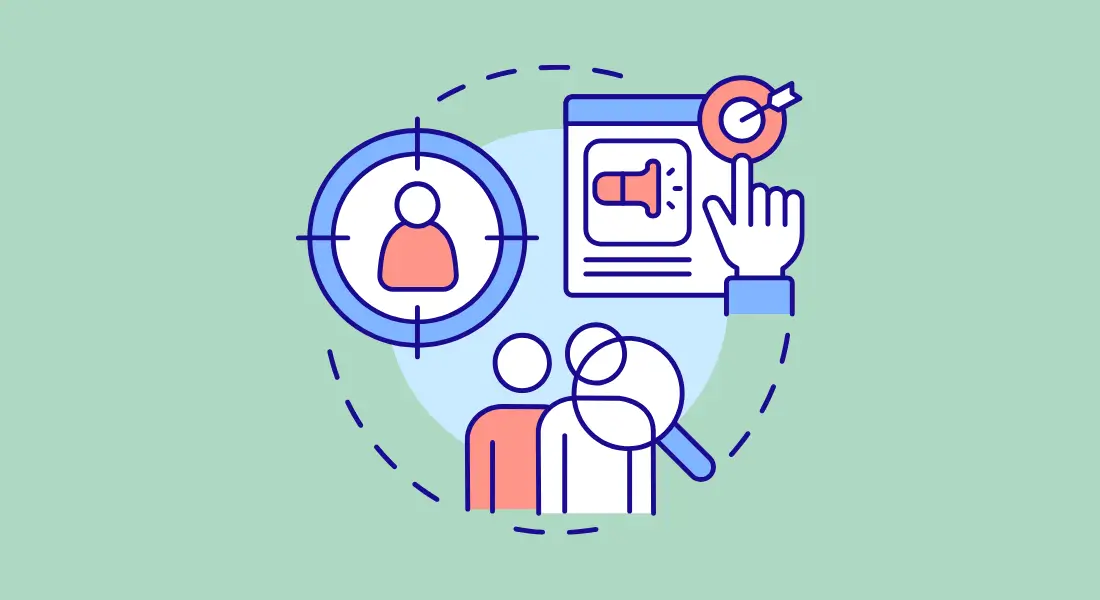
For example, in many omnichannel customer experience examples, businesses have realized that customers expect real-time updates across channels. A customer might place an order online and expect to pick it up in-store within a short time frame, but if there is a delay or confusion, this creates friction. Retailers like Walmart have tackled this by integrating real-time inventory tracking into their mobile app and website, ensuring that customers know when their items are ready for pickup, reducing frustration and enhancing convenience.
Another pain point commonly faced by businesses is a lack of personalization across channels. Customers often feel disconnected when they receive generic communication, product recommendations, or offers that do not reflect their individual preferences or purchase history. Companies like Amazon have solved this by using personalized data to provide tailored product recommendations and content across all channels, ensuring a consistent and engaging experience.
Once pain points are identified, businesses can explore opportunities to enhance the customer experience by streamlining processes, improving technology, and personalizing interactions. For example, offering self-service options via mobile apps or ensuring that customer service teams have access to comprehensive customer data are ways to reduce friction and create a more cohesive omnichannel experience.
Ultimately, mapping out the customer journey and identifying areas for improvement are fundamental steps in building a successful omnichannel strategy. By gaining insights into how customers engage with your brand across touchpoints and understanding their pain points, businesses can take actionable steps to enhance customer satisfaction, foster loyalty, and create a seamless, interconnected experience that sets them apart from competitors.
Step 2: Implement a Unified Customer Data Platform
An effective omnichannel strategy is built on a foundation of accessible and comprehensive customer data. Without a unified system for managing this data, businesses run the risk of offering disjointed experiences, where customers encounter inconsistencies when switching between channels. A unified customer data platform (CDP) centralizes all customer information, allowing businesses to access detailed profiles and offer personalized experiences across all channels.
How to centralize customer data across departments and channels
Centralizing customer data across departments and channels involves integrating all customer interactions—whether they occur online, in-store, via mobile apps, or through customer service—into a single, unified platform. A well-implemented CDP collects data from various touchpoints, including browsing behavior, purchase history, social media engagement, loyalty program participation, and customer service inquiries, creating a comprehensive profile for each customer.

One of the best omnichannel customer experience examples is Amazon, where customer data from website activity, mobile app usage, Alexa interactions, and even delivery preferences are seamlessly integrated. This allows Amazon to create a unified view of the customer, enabling highly personalized product recommendations and tailored experiences across platforms. Whether a customer interacts with Amazon through the mobile app or via Alexa, the system remembers preferences and purchases, ensuring a consistent and personalized experience.
To implement a successful CDP, businesses must first identify all relevant data sources across their departments, including marketing, sales, customer service, and operations. The next step is to select a data management platform that can collect, organize, and store customer data from these sources. Leading CDPs, such as Salesforce or HubSpot, provide tools for integrating multiple channels, ensuring that every department has access to a shared database of customer insights.
Data silos—where different departments manage their own sets of customer information—are one of the main obstacles businesses face when implementing a unified customer data platform. Breaking down these silos is essential to create a single source of truth for all customer interactions. By making customer data accessible across departments, businesses can ensure that marketing teams, sales representatives, and customer service agents are all working from the same, up-to-date customer profiles.
Ensuring real-time data synchronization for a consistent experience
Real-time data synchronization is the key to providing a truly seamless omnichannel customer experience. When customer data is updated in real-time, businesses can ensure that customer interactions on one channel are immediately reflected across all other channels. This means that whether a customer makes a purchase in-store, contacts customer service via chat, or browses products online, the business has an up-to-date understanding of their needs and preferences.
In many successful omnichannel customer experience examples, real-time synchronization is essential. For instance, Walmart uses real-time inventory tracking to ensure that customers shopping online or via the mobile app have accurate information about product availability in local stores. This reduces customer frustration and enhances convenience, allowing customers to place orders for in-store pickup or delivery based on real-time data.
Similarly, in the financial services sector, Bank of America provides real-time updates across its mobile app, ATMs, and in-branch systems. If a customer deposits a check using the mobile app, the updated balance is immediately reflected across all platforms, ensuring a consistent and accurate banking experience. Without real-time data synchronization, customers would face delays and inconsistencies that could damage trust in the brand.
To achieve real-time synchronization, businesses must invest in data management and integration tools that support instant updates across all channels. Modern CDPs are designed to handle real-time data processing, enabling businesses to track customer behavior and preferences as they happen. This is particularly important for businesses that operate across multiple platforms, as it ensures that customers receive the same experience regardless of how they engage with the brand.
Another benefit of real-time synchronization is that it enables businesses to offer personalized experiences based on the most recent customer data. For example, Sephora uses real-time customer data to offer personalized beauty recommendations and promotions in-store, online, and via mobile. Whether a customer interacts with the Sephora app or visits a store, they receive recommendations based on their most recent purchases and preferences, creating a consistent and personalized experience that keeps customers engaged.
Implementing a unified customer data platform is a critical step in building the best omnichannel customer experience. By centralizing customer data across departments and channels, businesses can create a comprehensive view of each customer, enabling personalized and consistent interactions across all touchpoints. Real-time data synchronization further enhances the customer experience by ensuring that all interactions are updated instantly, reducing friction and improving satisfaction. As demonstrated by successful omnichannel customer experience examples like Amazon, Walmart, and Sephora, businesses that effectively implement a unified CDP and real-time synchronization will be able to deliver a superior customer experience that drives engagement and loyalty.
Step 3: Focus on Personalization at Every Step
Delivering a personalized experience is essential in creating a strong omnichannel customer journey. Customers today expect brands to know their preferences, anticipate their needs, and offer relevant recommendations, regardless of the channel they are using. Successful omnichannel customer experience examples from companies like Amazon, Starbucks, and Sephora demonstrate how personalization can significantly enhance customer satisfaction and loyalty. By focusing on personalization at every stage, businesses can ensure that they meet customer expectations, create stronger relationships, and stand out in a competitive market.
Using customer data to personalize interactions
The foundation of personalization lies in customer data. By collecting and analyzing data from various touchpoints—whether it’s online behavior, in-store purchases, or interactions on mobile apps—businesses can gain deep insights into customer preferences, purchase history, and even browsing patterns. These insights enable brands to personalize every interaction, from the products recommended to the offers and discounts tailored specifically to each individual customer.
One of the best omnichannel customer experience examples of using data for personalization is Amazon. The eCommerce giant leverages vast amounts of customer data to recommend products, suggest relevant services, and tailor marketing campaigns to individual preferences. For example, when a customer searches for a specific product on Amazon, the system not only remembers that search but uses it to inform future recommendations. Amazon also personalizes its homepage based on each customer’s browsing and purchasing history, ensuring that the products displayed are relevant and appealing to that specific user.
Similarly, Starbucks personalizes its customer experience by using data from the Starbucks Rewards app. Customers receive tailored offers based on their favorite drinks, past purchases, and seasonal preferences. This personalized approach encourages repeat business and deepens customer loyalty, as customers feel that Starbucks understands their individual tastes and provides relevant rewards and recommendations.
To achieve such a high level of personalization, businesses must collect and centralize customer data from all channels, ensuring that every department has access to the same insights. Whether a customer interacts through a website, mobile app, social media, or in-store, the data generated from those interactions should be used to inform personalized strategies across all touchpoints.
For example, Sephora uses a blend of online and offline data to create personalized beauty recommendations for its customers. The company tracks browsing behavior on its website, integrates purchase history from in-store and online transactions, and even uses virtual try-on data from its mobile app. This comprehensive understanding of customer preferences enables Sephora to deliver tailored product suggestions, emails, and offers, creating a more engaging and relevant experience.
Tools and platforms to deliver personalized experiences across channels
To successfully implement personalization across all channels, businesses need the right tools and platforms. Customer relationship management (CRM) systems, customer data platforms (CDPs), artificial intelligence (AI), and machine learning algorithms are essential for gathering, processing, and acting on customer data. These tools allow businesses to personalize experiences in real-time, ensuring that every interaction is relevant and timely.

One of the key tools used to deliver personalized omnichannel customer experiences is a customer data platform (CDP). A CDP collects and consolidates customer data from multiple sources, creating a unified customer profile that can be accessed by all departments. This centralized data allows businesses to offer personalized experiences across channels, as customer preferences and history are available to all touchpoints. For example, if a customer browses a product online but doesn’t complete the purchase, a CDP can trigger personalized emails reminding the customer about the product, or show targeted ads featuring the same item on social media.
Artificial intelligence (AI) plays a significant role in delivering personalized experiences at scale. AI-driven algorithms can analyze large amounts of customer data, identify patterns, and predict future behavior, enabling businesses to offer tailored recommendations and promotions. For example, Netflix uses AI to personalize its content recommendations based on a user’s viewing history, making it easier for customers to discover new shows and movies that align with their interests. Similarly, retailers can use AI to predict which products customers are most likely to purchase based on past behavior, making their shopping experience more relevant and efficient.
Personalization engines are another crucial tool for businesses looking to offer tailored experiences. These engines use machine learning to analyze customer behavior in real-time and deliver personalized content or product suggestions across various channels. For example, Spotify uses a personalization engine to recommend new music based on each listener’s preferences and listening habits, creating a highly customized user experience.
In the retail space, businesses like Sephora rely on omnichannel marketing platforms to deliver personalized messages and offers across multiple touchpoints. These platforms integrate with CRMs and CDPs to track customer interactions, segment audiences, and automate personalized campaigns. Whether it’s sending a push notification to remind a customer about an abandoned cart or offering a birthday discount, these platforms ensure that businesses engage with customers at the right moment with the right message.
Dynamic content is another powerful tool for personalization. By using dynamic content on websites and in emails, businesses can tailor the user experience based on real-time data. For instance, an eCommerce site can display personalized product recommendations or offers based on a customer’s past purchases and browsing history. This level of personalization not only increases conversion rates but also keeps customers engaged and coming back for more.
Step 4: Leverage Technology and Automation
Incorporating advanced technology and automation into an omnichannel strategy allows businesses to improve customer interactions, reduce friction, and provide a more cohesive experience across platforms. By integrating tools such as artificial intelligence (AI), chatbots, virtual assistants, and predictive analytics, companies can enhance efficiency while maintaining the personalization and engagement that customers expect in a modern omnichannel environment.
Integrating AI-powered solutions for better customer interactions
AI has transformed the way businesses manage customer interactions by enabling personalized, data-driven experiences that can be delivered at scale. AI-powered solutions allow companies to analyze large volumes of customer data, automate routine processes, and predict future customer behavior, all while maintaining a high level of personalization and relevance. By integrating AI into their omnichannel strategy, businesses can ensure that customer interactions are consistent, efficient, and tailored to individual preferences.
One of the best omnichannel customer experience examples of AI integration is Amazon’s use of AI to power personalized product recommendations, search results, and even customer service. Amazon’s algorithms analyze customer behavior in real-time, offering personalized suggestions based on previous interactions, browsing history, and purchase patterns. This level of personalization is applied across the website, mobile app, and voice assistant Alexa, ensuring that customers receive a consistent experience no matter how they engage with the brand.

Similarly, AI can be used to enhance customer service interactions. AI-driven tools can analyze customer inquiries, predict their needs, and provide instant responses, whether through automated chatbots or virtual assistants. For example, Bank of America uses its AI-powered virtual assistant Erica to help customers with a variety of banking tasks, such as checking balances, making payments, and tracking spending. Erica’s integration across digital and mobile platforms ensures that customers receive the same level of support and personalized service regardless of the channel they use.
By leveraging AI, businesses can significantly improve their customer interactions by anticipating customer needs, offering relevant solutions, and reducing the time it takes to resolve issues. AI also enhances operational efficiency by automating routine tasks, freeing up human agents to focus on more complex or high-value customer interactions.
Chatbots, virtual assistants, and predictive analytics for omnichannel efficiency
Automation tools like chatbots and virtual assistants are essential for delivering a seamless omnichannel customer experience. These tools allow businesses to provide real-time support across channels, reduce response times, and handle high volumes of customer inquiries without sacrificing the quality of service. By using chatbots and virtual assistants, companies can engage customers at every stage of their journey, offering immediate assistance while maintaining a consistent experience across digital touchpoints.
One of the key omnichannel customer experience examples is Sephora’s use of chatbots to enhance customer service on its website and social media platforms. Sephora’s chatbots can assist customers with finding products, offering makeup recommendations, and even scheduling in-store beauty appointments. The chatbot’s ability to engage customers across platforms helps ensure that no matter where a customer interacts with the brand—whether through the website, mobile app, or social media—the experience is seamless and efficient. The chatbot also integrates with Sephora’s customer database, allowing it to provide personalized recommendations based on previous purchases and browsing history.
In addition to chatbots, virtual assistants are playing an increasingly important role in omnichannel strategies. Virtual assistants, powered by AI, can handle more complex tasks, such as managing customer accounts, answering detailed inquiries, and providing personalized insights. For example, Citibank’s AI-driven virtual assistant helps customers manage their finances by providing real-time account information, transaction alerts, and personalized financial advice across the mobile app and website. This type of automation allows Citibank to provide consistent, personalized service, reducing the need for customers to switch between platforms or contact live agents for routine inquiries.
Predictive analytics is another powerful tool that helps businesses enhance the efficiency of their omnichannel strategies. By analyzing customer data, businesses can anticipate customer needs and behaviors, allowing them to proactively engage customers with personalized offers, recommendations, or solutions before the customer even realizes they need them. Predictive analytics can also be used to optimize inventory management, marketing campaigns, and customer service efforts, ensuring that businesses are always one step ahead in delivering the right message at the right time.
For example, Walmart uses predictive analytics to optimize its omnichannel customer experience by analyzing purchasing patterns and predicting which products customers are likely to buy next. This allows Walmart to send personalized offers and recommendations to customers through its mobile app or website, creating a more engaging and relevant shopping experience. Predictive analytics also helps Walmart manage inventory more effectively, ensuring that the products customers want are available for immediate in-store pickup or delivery.
Predictive analytics can also be applied to customer service. By analyzing previous interactions and customer behavior, AI-powered systems can predict the types of questions or issues a customer is likely to have and proactively offer solutions. This reduces the need for customers to search for answers or wait for a response, improving the overall experience and reducing frustration.
Step 5: Ensure Consistent Branding and Messaging
In an omnichannel environment, customers interact with a brand through multiple channels, such as websites, social media, mobile apps, physical stores, and email. To deliver a seamless and coherent customer experience, businesses need to ensure that their branding and messaging are consistent across all these platforms. This means that the tone, language, visuals, and overall brand identity should remain aligned, no matter how or where customers engage with the brand. Consistency helps reinforce brand recognition, fosters customer loyalty, and ensures that customers feel connected to the brand no matter which touchpoint they use.
Aligning messaging, tone, and visuals across all platforms
One of the core principles of a strong omnichannel strategy is ensuring that branding and messaging are cohesive across every customer interaction. This involves aligning your brand’s tone, language, and visual elements to create a unified experience that customers can recognize immediately. In successful omnichannel customer experience examples, businesses ensure that customers encounter the same values, messages, and visual cues whether they are browsing a website, receiving a marketing email, engaging on social media, or visiting a physical store.
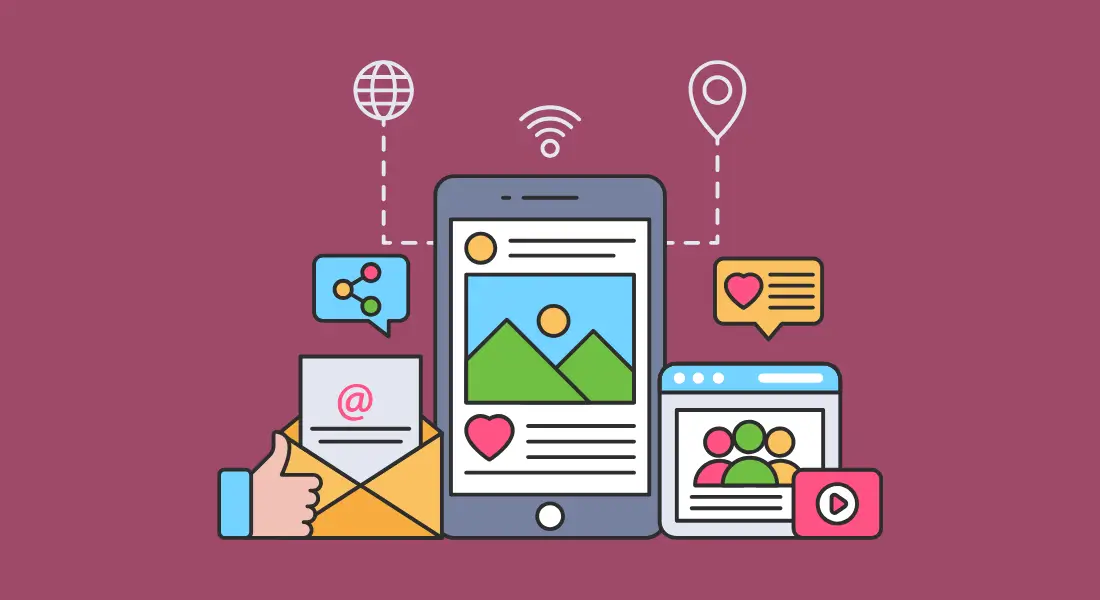
For instance, Sephora is an excellent example of a brand that maintains consistency in its messaging, tone, and visuals across all channels. Whether customers are shopping in-store, browsing Sephora’s mobile app, or engaging with the brand on social media, they encounter the same sleek, modern, and beauty-focused messaging. Sephora’s omnichannel approach extends its visual branding, including its black-and-white aesthetic and clean product imagery, across all platforms. This level of consistency ensures that customers feel a continuous connection with the brand, regardless of how they choose to engage.
To achieve this level of alignment, businesses need to develop clear brand guidelines that outline the tone of voice, key messaging points, visual elements, and customer engagement protocols. These guidelines should be applied consistently across all channels, ensuring that no matter how customers interact with the brand, the experience feels cohesive. For example, if a brand uses a friendly and conversational tone in its email communications, that same tone should be reflected in its social media posts, website copy, and in-store signage.
Visual branding is just as important as messaging. A brand’s logo, color palette, typography, and overall design should be uniform across platforms to reinforce brand recognition. When customers visit a website, open a mobile app, or walk into a store, they should immediately recognize the brand based on visual cues. Amazon, for instance, maintains consistent visuals across its eCommerce platform, mobile app, and advertising campaigns, using the same recognizable design elements to create a unified brand identity.
Using omnichannel tools for consistent communication strategies
Maintaining consistency in branding and messaging across platforms can be challenging, especially for businesses that operate multiple channels and touchpoints. However, omnichannel tools can play a critical role in ensuring that messaging remains uniform across all interactions. These tools help businesses streamline their communication strategies, automate processes, and ensure that customers receive the same message regardless of the channel they use.

Customer relationship management (CRM) systems are one of the key tools that support consistent messaging across an omnichannel experience. CRMs allow businesses to centralize customer data, ensuring that all departments and teams have access to the same customer information. This centralized data allows marketing, sales, and customer service teams to deliver personalized and consistent messages based on the customer’s history and preferences. For example, a CRM can ensure that a customer who engages with a brand through email receives the same promotions and updates as those who engage through social media or in-store.
Email marketing platforms are another powerful tool for ensuring consistent communication across an omnichannel strategy. Businesses can use these platforms to design and send automated email campaigns that align with their overall branding and messaging. For example, Sephora uses its email marketing platform to send personalized offers and promotions based on each customer’s preferences and past purchases, ensuring that the tone and visuals in the email are consistent with the messaging on the website and mobile app. Automated email campaigns also ensure that customers receive timely, relevant communications, reinforcing the brand’s presence across multiple touchpoints.
Social media management tools also help businesses maintain consistent messaging. Platforms like Hootsuite and Sprout Social allow brands to schedule and publish posts across multiple social media channels, ensuring that messaging is uniform and aligned with the brand’s overall strategy. These tools also help businesses track customer engagement, enabling them to monitor responses and adjust their messaging accordingly to ensure consistency across all interactions.
An excellent omnichannel customer experience example of consistent messaging is Starbucks, which uses its mobile app, website, in-store promotions, and social media to deliver a unified brand message. Starbucks consistently communicates its brand values of quality, sustainability, and community across all platforms. Whether a customer is receiving an email about a new product, using the Starbucks app to place an order, or seeing an in-store promotion, the message remains cohesive and aligned with the brand’s identity.
In addition to these tools, businesses can use AI-driven content management systems (CMS) to automate the delivery of personalized content across platforms while maintaining consistency in messaging and visuals. AI-powered systems can analyze customer behavior and preferences to deliver targeted content, ensuring that the message resonates with the customer while staying true to the brand’s core values and tone.
Step 6: Train Your Staff to Deliver Seamless Experiences
Employees are the human connection between a brand and its customers. In an omnichannel environment, where customers move fluidly between online platforms, mobile apps, and physical stores, employees must be well-prepared to provide a seamless experience no matter where or how a customer engages with the brand. Well-trained staff are essential to creating positive and consistent interactions that reinforce the brand’s value, resolve customer issues quickly, and ensure satisfaction across all touchpoints.
The role of well-trained employees in delivering omnichannel CX
The role of employees in delivering a successful omnichannel customer experience cannot be overstated. Well-trained employees act as the glue that holds the omnichannel strategy together, ensuring that customers receive the same level of service and support regardless of which channel they use. Employees who are well-versed in the company’s omnichannel approach can help bridge the gap between physical and digital experiences, making transitions between channels seamless and intuitive for customers.
One of the most effective omnichannel customer experience examples comes from Nordstrom, a retailer that places a strong emphasis on customer service across all its channels. Nordstrom trains its employees to be knowledgeable about both in-store and online products and services. This allows in-store staff to assist customers with their online orders and helps online customer service agents provide information about in-store experiences. This approach ensures that no matter how customers choose to shop, they receive consistent, high-quality service.
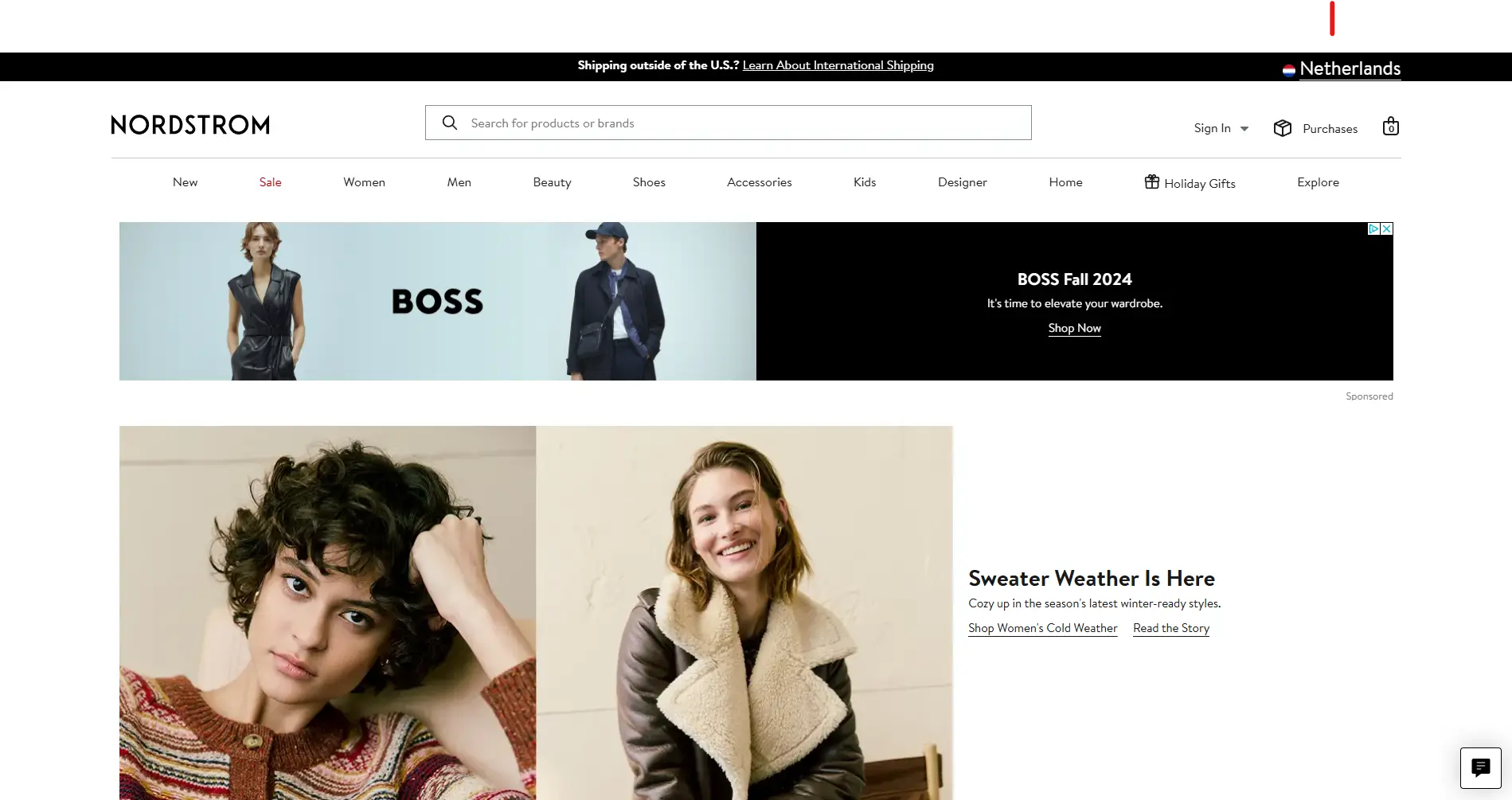
In an omnichannel environment, employees must be able to access and understand customer data from multiple touchpoints. For example, if a customer makes a purchase online and later visits a store to inquire about a return, the in-store employee should be able to access the customer’s online purchase history and process the return efficiently. Similarly, if a customer starts a conversation with a customer service representative via live chat and later follows up with a phone call, the support agent should have access to the full history of the interaction to avoid asking the customer to repeat information. This level of continuity is only possible when employees are trained to navigate the technology and systems that support the omnichannel experience.
In addition to customer service skills, employees must also be adept at using the tools and platforms that drive the omnichannel strategy. This includes customer relationship management (CRM) systems, inventory management software, and customer data platforms (CDPs) that enable them to access real-time information about customer preferences, order history, and loyalty program details. By understanding how to use these tools, employees can offer personalized recommendations, provide faster service, and enhance the overall customer experience.
Customer service training across both digital and physical platforms
To deliver seamless omnichannel customer experiences, businesses must invest in comprehensive customer service training programs that cover both digital and physical platforms. This type of training ensures that employees can provide consistent, high-quality service regardless of how or where they interact with customers. Successful omnichannel customer experience examples show that businesses with well-trained teams are better positioned to meet customer expectations and create positive, memorable interactions.
Training programs should cover the specific skills needed for each platform, whether it’s in-store customer service, online chat support, or social media engagement. Employees who work in physical stores need to understand how to navigate digital systems, access customer profiles, and process online orders, while employees who provide digital support need to be familiar with in-store policies and inventory to answer customer inquiries accurately.

For instance, Walmart’s omnichannel strategy relies heavily on its employees’ ability to manage both online and in-store transactions. Walmart trains its staff to handle online order pickups, returns, and customer inquiries at physical stores, while also ensuring that online customer service representatives are knowledgeable about in-store operations. This level of cross-platform training ensures that customers receive consistent service, whether they are interacting online or in person.
Training should also include customer interaction skills specific to the digital environment. For example, handling live chat inquiries requires different communication techniques than serving customers in a physical store. Digital customer service representatives must be able to respond quickly, provide clear and concise answers, and adapt to multiple types of inquiries in real-time. Training programs should focus on these skills, ensuring that employees can provide efficient and empathetic service through digital platforms.
Additionally, customer service training should emphasize the importance of personalization and the use of customer data to improve interactions. Employees should be trained to use CRM systems to access customer history, preferences, and previous interactions, allowing them to offer personalized solutions. For example, Sephora trains its in-store employees to access customer profiles through its loyalty program system, enabling them to offer personalized product recommendations based on past purchases. Similarly, Sephora’s online chat agents can reference the same customer data to provide a personalized experience, creating a unified and seamless interaction across channels.
Another key element of training is ensuring that employees understand the company’s omnichannel tools and systems. This includes training on how to use digital inventory management systems that synchronize stock levels between online and in-store channels, as well as training on customer engagement tools like chatbots and virtual assistants. For example, Bank of America’s employees are trained to work with the AI-powered virtual assistant Erica, ensuring that customers who use Erica for digital banking support receive the same level of personalized service as those who interact with a live agent.
Step 7: Optimize for Mobile
Optimizing the mobile experience is not just about creating a mobile-friendly website or app; it’s about ensuring that mobile platforms are fully integrated with all other customer touchpoints. A well-designed mobile experience allows customers to transition effortlessly between devices and channels, whether they are shopping, seeking customer support, or engaging with a brand’s content. For businesses, the mobile experience must align with and complement the broader omnichannel strategy, providing a consistent, frictionless journey from one channel to the next.
How to design mobile experiences that integrate with other channels
When designing mobile experiences as part of an omnichannel strategy, businesses must consider how the mobile platform interacts with other channels, such as physical stores, websites, social media, and customer service platforms. An optimized mobile experience ensures that customers can start an activity on one platform and continue it on another without any disruption. Successful omnichannel customer experience examples, such as those from Starbucks and Walmart, show how integrating mobile experiences into the overall customer journey can enhance satisfaction and engagement.
A key aspect of optimizing the mobile experience is ensuring continuity between mobile and other platforms. For example, if a customer adds items to their shopping cart on a mobile app, that cart should remain intact when they access the website on a desktop or visit a physical store. Amazon is a prime example of this integration, where customers can start shopping on the Amazon app and later switch to the desktop site or interact with Alexa to continue their shopping experience. This seamless interaction across channels ensures that customers have a consistent journey, no matter the device or platform they use.
Another critical factor in designing integrated mobile experiences is synchronization of customer data. This means that all customer interactions on mobile devices should be reflected across other channels in real-time. For instance, a customer browsing a product on the mobile app should be able to see that same product, along with their preferences and any personalized recommendations, on the desktop version of the website. Sephora’s mobile app exemplifies this strategy by synchronizing customer profiles, purchase histories, and beauty preferences across both digital and physical channels. Whether a customer is using the app or shopping in-store, they have access to their personalized recommendations and rewards, creating a unified experience.
Additionally, businesses should design mobile experiences with intuitive navigation that caters to on-the-go users. Customers accessing a brand’s mobile app or site typically expect quick and easy access to key features like product searches, checkout options, and customer support. Walmart’s mobile app, for instance, provides seamless access to services like online grocery orders, in-store pickup, and inventory tracking. The app is designed to be user-friendly, with a focus on ease of navigation and quick service, which caters to the busy lifestyles of its customers.
Moreover, integrating mobile with in-store experiences is crucial for omnichannel success. Many customers use their smartphones while shopping in physical stores, whether to compare prices, check product availability, or read reviews. Businesses can leverage this behavior by designing mobile experiences that complement the in-store journey. For example, Starbucks’ mobile app allows customers to order and pay ahead, enabling them to skip lines and pick up their orders when they arrive at the store. This mobile-to-physical integration reduces friction, enhances convenience, and strengthens the overall customer experience.
Ensuring mobile-first solutions in omnichannel CX strategies
With more than half of global web traffic coming from mobile devices, businesses must prioritize mobile-first solutions when developing their omnichannel strategies. A mobile-first approach ensures that mobile platforms are not treated as an afterthought but rather as a central part of the customer journey. Successful omnichannel customer experience examples highlight how businesses can design their strategies with mobile as a core channel, ensuring that mobile users receive the same level of engagement, personalization, and service as those interacting through other platforms.
To build a mobile-first omnichannel experience, businesses should focus on mobile-responsive design. This ensures that websites, emails, and digital content are optimized for mobile screens, providing a smooth experience regardless of the device being used. Retailers like Amazon and Walmart are excellent examples of brands that prioritize mobile-responsive design, ensuring that their mobile apps and websites are fully functional and easy to use on smartphones and tablets. By adopting mobile-responsive design, businesses can ensure that customers enjoy a seamless experience across all devices, preventing frustrations like poorly formatted pages or slow loading times.

Another crucial element of mobile-first solutions is performance optimization. Customers using mobile devices expect fast load times, instant access to information, and smooth functionality. Any delays or glitches can quickly lead to frustration and abandonment. For example, Starbucks has optimized its mobile app to handle high volumes of transactions during peak times, ensuring that customers can quickly place orders, view rewards, and access personalized offers. By ensuring optimal performance, businesses can create a frictionless mobile experience that encourages continued engagement.
Personalization is also critical in mobile-first solutions. By leveraging customer data, businesses can offer personalized content, recommendations, and promotions directly within the mobile app or mobile-friendly website. For instance, Sephora’s mobile app sends personalized product recommendations and promotions based on customers’ previous purchases and preferences. These personalized experiences drive engagement and ensure that customers feel valued, no matter the channel they are using.
Mobile-first solutions should also focus on seamless payment options. Mobile users expect quick and secure payment processes, and offering multiple payment methods, including mobile wallets, one-click checkout, and contactless payments, can significantly enhance the mobile experience. Amazon’s one-click ordering system is an excellent example of how simplifying the payment process can lead to higher customer satisfaction and repeat purchases.
Lastly, businesses should ensure that their mobile-first strategies include mobile customer support. Many customers prefer resolving issues directly from their smartphones, so offering support options like in-app chat, FAQs, and self-service portals is essential. Bank of America’s mobile app, for instance, integrates its virtual assistant Erica, which helps customers manage their accounts, track spending, and resolve banking issues without the need for human intervention. This mobile-first customer support ensures that users can access the assistance they need quickly and efficiently.
Tools and Technologies for Enhancing Omnichannel CX
The backbone of a successful omnichannel customer experience strategy is the effective use of tools and technologies that support seamless, personalized, and consistent interactions across all platforms. These technologies help businesses collect, analyze, and act on customer data in real-time, ensuring that the customer journey is optimized and cohesive. From leveraging customer data to driving personalization and managing omnichannel campaigns, various tools and platforms play a pivotal role in delivering a high-quality customer experience.
Customer Data Platforms (CDPs)
One of the most critical technologies for enhancing omnichannel customer experiences is the customer data platform (CDP). CDPs allow businesses to centralize customer data from multiple sources, providing a unified view of each customer’s interactions across all channels. By gathering data from websites, mobile apps, social media, email, and in-store transactions, CDPs give businesses the ability to create comprehensive customer profiles that can be used to deliver personalized experiences.
Centralizing customer data ensures that all departments, from marketing to customer service, have access to the same up-to-date information. This leads to better decision-making, more relevant interactions, and improved customer satisfaction. One of the most effective omnichannel customer experience examples is Amazon, which uses a CDP to collect data from its vast network of digital platforms. The centralized data allows Amazon to offer personalized product recommendations, targeted ads, and tailored content based on customer behavior and preferences, regardless of the channel the customer uses.
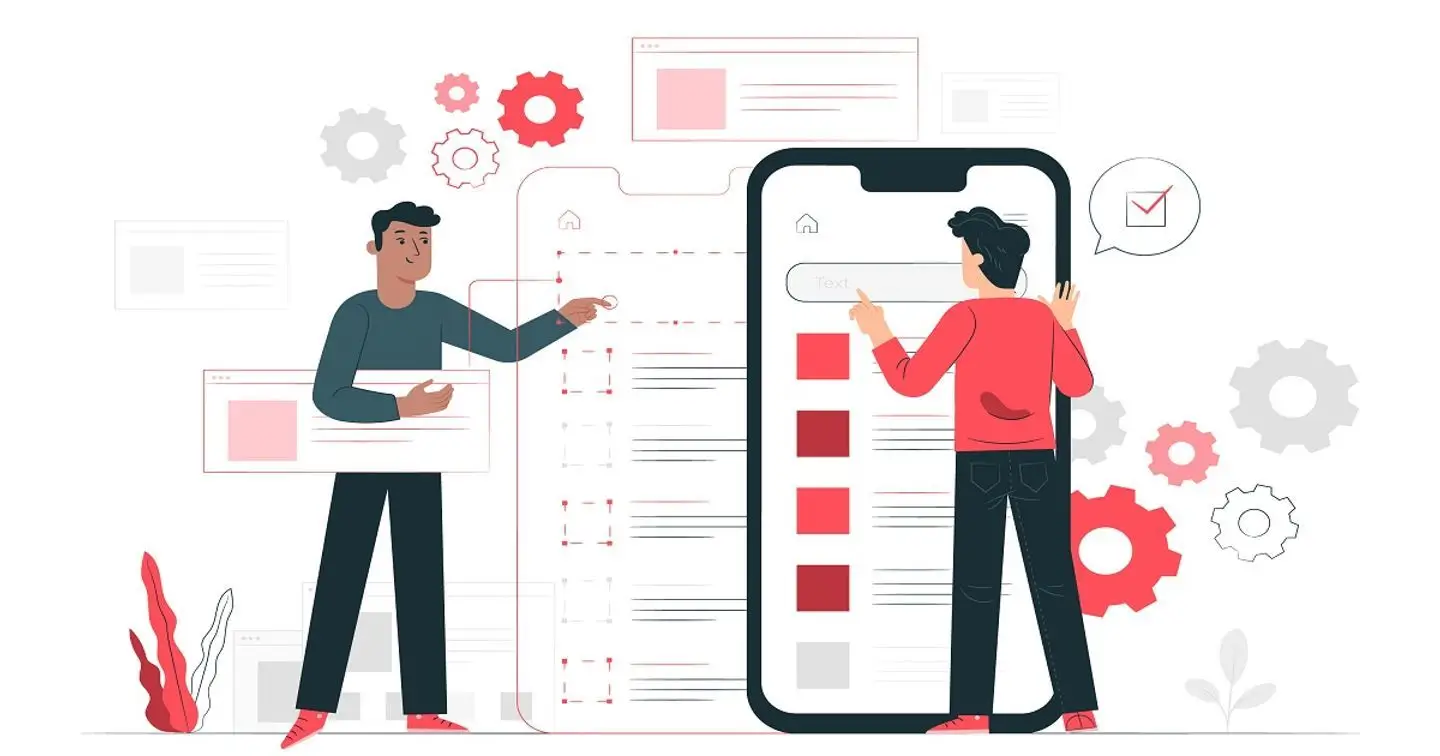
CDPs also enable businesses to segment their audiences more effectively, delivering specific content and offers to different groups of customers. For instance, Sephora uses a CDP to manage its loyalty program, tracking customers’ purchasing habits and beauty preferences across both digital and physical touchpoints. The platform allows Sephora to offer personalized rewards and product recommendations, ensuring that each customer feels valued and engaged.
By leveraging customer data through CDPs, businesses can create a consistent, personalized experience that enhances customer loyalty and satisfaction across all channels.
AI and Machine Learning Tools
AI and machine learning tools have become indispensable in driving personalization and predictive customer experiences in omnichannel strategies. These technologies analyze large volumes of customer data to identify patterns, make predictions, and offer personalized recommendations, transforming how businesses interact with their customers.
AI-powered tools can tailor customer interactions in real-time, ensuring that the experience is dynamic and responsive to individual needs. A standout omnichannel customer experience example is Netflix, which uses AI to analyze user behavior and recommend movies and TV shows based on viewing habits. This personalization is consistent across all channels—whether customers are using the Netflix website, mobile app, or smart TV—creating a unified and highly engaging experience.

Machine learning tools also enable businesses to predict customer behavior and anticipate their needs. For example, Starbucks uses AI to personalize the customer experience through its mobile app, analyzing purchase patterns to offer personalized drink recommendations and promotions. These insights not only enhance the customer’s experience but also drive sales and increase customer loyalty.
In the financial services sector, Citibank leverages AI and machine learning to deliver predictive customer support and personalized financial advice. The AI-driven tools analyze transaction data and spending patterns to offer tailored recommendations, helping customers manage their finances more effectively. This integration of AI ensures that the customer experience is personalized, efficient, and proactive, across both digital and physical touchpoints.
Omnichannel Marketing Platforms
Managing customer interactions and campaigns across multiple platforms can be a daunting task without the right tools. Omnichannel marketing platforms simplify this process by enabling businesses to plan, execute, and track campaigns across all customer touchpoints. These platforms allow for the seamless coordination of marketing messages, promotions, and content across channels like social media, email, websites, and mobile apps.
One of the key benefits of using an omnichannel marketing platform is the ability to deliver consistent messaging and offers in real-time. For instance, retail brands like Walmart use omnichannel marketing platforms to deliver personalized promotions to customers based on their location, past purchases, and browsing behavior. These platforms help Walmart ensure that its promotions are synchronized across the mobile app, website, and in-store experiences, providing a cohesive and timely customer journey.
In another effective omnichannel customer experience example, Starbucks uses an omnichannel marketing platform to send personalized offers to customers through its mobile app, email, and social media. The platform ensures that customers receive consistent messaging and rewards no matter how they interact with the brand. By integrating all channels, Starbucks can track customer engagement and continuously optimize its marketing efforts to deliver the most relevant content.
These platforms also allow businesses to automate much of their marketing efforts, freeing up time to focus on strategy and customer engagement. By using omnichannel marketing platforms, businesses can ensure that their campaigns are reaching the right customers, at the right time, on the right channels.
Customer Relationship Management (CRM) Systems
Customer relationship management (CRM) systems play a vital role in unifying and streamlining customer interactions across channels. CRMs allow businesses to store, track, and manage customer interactions and data in one centralized system, giving sales, marketing, and customer service teams a holistic view of each customer’s journey.
A well-integrated CRM system ensures that every customer interaction, whether it occurs via email, social media, phone, or in person, is recorded and accessible to all relevant departments. This leads to better collaboration between teams and ensures that customers receive personalized, consistent service across all touchpoints. One of the best omnichannel customer experience examples is Salesforce, a CRM platform used by businesses around the world to manage customer data and streamline communications. Salesforce enables companies to track interactions, automate workflows, and deliver personalized customer experiences across channels.

For instance, Bank of America uses a CRM system to manage customer interactions across its mobile app, website, and in-branch services. By integrating all channels into a single system, Bank of America can offer personalized banking experiences based on each customer’s history and preferences, ensuring that whether a customer is using the app or visiting a branch, the experience feels seamless.
CRM systems are also essential for managing customer support. For example, Zendesk provides omnichannel support solutions that integrate with CRMs, allowing customer service agents to access a complete history of interactions and provide informed, personalized assistance. This ensures that customers do not have to repeat information and receive consistent support, whether through email, chat, or phone.
Real-Time Analytics
Real-time analytics are critical for tracking and optimizing customer journeys in an omnichannel environment. These tools enable businesses to monitor customer behavior across all touchpoints as it happens, allowing them to make data-driven decisions and optimize the customer experience in real-time.
Real-time analytics tools provide insights into how customers interact with various channels, helping businesses identify pain points, improve engagement, and tailor content to specific customer segments. One of the most powerful omnichannel customer experience examples of real-time analytics is Walmart’s use of predictive analytics to optimize its supply chain and ensure that products are available for both online and in-store customers. By analyzing customer behavior and demand patterns in real-time, Walmart can adjust inventory and pricing to meet customer expectations.

Real-time analytics also allow businesses to personalize the customer journey as it unfolds. For example, Amazon uses real-time analytics to track customer behavior and deliver personalized product recommendations instantly, ensuring that each interaction is relevant and engaging. This level of personalization enhances the overall customer experience and increases the likelihood of conversion.
By leveraging real-time analytics, businesses can continuously improve their omnichannel strategies, ensuring that the customer journey is smooth, personalized, and optimized for success.
Challenges and Solutions in Building a Successful Omnichannel CX
Building a successful omnichannel customer experience is essential for businesses that aim to provide a seamless and consistent journey across multiple platforms. However, achieving this comes with its own set of challenges. From managing data across disparate systems to maintaining consistency across channels and addressing customer privacy concerns, businesses must navigate several obstacles to create a cohesive omnichannel strategy. In this section, we explore some of the key challenges businesses face in implementing omnichannel strategies and provide solutions drawn from real-world omnichannel customer experience examples.
Siloed Data Systems
One of the biggest challenges in building a successful omnichannel customer experience is the issue of siloed data systems. In many organizations, customer data is stored across multiple platforms and departments—whether it be in marketing, sales, or customer service—resulting in fragmented and incomplete views of the customer. This makes it difficult to deliver a personalized and cohesive experience across all touchpoints. Data fragmentation leads to inconsistent customer interactions and missed opportunities for personalization.

To overcome this challenge, businesses need to invest in technologies that unify data across all departments and channels. One of the best omnichannel customer experience examples of overcoming siloed data systems is Sephora, which integrates customer data from its loyalty program, website, mobile app, and physical stores. Using a customer data platform (CDP), Sephora centralizes all customer data into a single, unified system, enabling the company to offer personalized recommendations, rewards, and promotions based on a customer’s entire journey, regardless of how they engage with the brand.
The solution lies in implementing systems like customer data platforms (CDPs) and customer relationship management (CRM) systems that aggregate data from various touchpoints into a single, accessible location. This allows businesses to create comprehensive customer profiles, enabling them to deliver a consistent and personalized experience across channels.
Integration Complexities
The complexity of integrating multiple systems, platforms, and tools into a unified omnichannel strategy is another common challenge. Businesses often use a variety of technologies for managing customer data, processing payments, managing inventory, and delivering customer service. These systems may not always communicate with one another effectively, leading to inefficiencies, data silos, and inconsistencies in customer interactions.

To address integration complexities, businesses need to adopt technologies that facilitate seamless integration across platforms. One of the key omnichannel customer experience examples of successful integration is Walmart, which integrates its online and in-store systems to offer services such as buy-online, pick-up in-store (BOPIS). Walmart’s ability to integrate its inventory management system with its mobile app, website, and physical store infrastructure allows customers to shop across channels without friction. This level of integration is only possible through the use of advanced technology that ensures synchronization across all systems.
API (application programming interface) technologies and middleware can help businesses bridge the gap between different systems, enabling smooth data flow and real-time synchronization. Additionally, businesses should consider working with omnichannel marketing platforms and CRMs that are designed to integrate easily with other technologies, ensuring a more streamlined process.
Maintaining Consistency Across Channels
Ensuring a consistent customer experience across all channels—whether physical, digital, or mobile—is a major challenge in any omnichannel strategy. Customers expect to receive the same level of service, messaging, and branding regardless of how they interact with the brand. Inconsistencies between channels can lead to confusion, frustration, and diminished trust in the brand.

To ensure consistency, businesses must develop clear brand guidelines that cover messaging, tone, visual elements, and customer engagement protocols. These guidelines should be applied across all channels, ensuring a uniform brand experience. One of the most prominent omnichannel customer experience examples is Starbucks, which maintains consistency in its messaging, tone, and visual identity across all platforms. Whether a customer orders through the mobile app, browses the website, or visits a physical store, they experience the same branding and service quality.
Using omnichannel tools, such as CDPs, CRM systems, and omnichannel marketing platforms, can help businesses synchronize messaging and branding across platforms. These tools allow businesses to centralize customer data and communication strategies, ensuring that the same messages, offers, and experiences are delivered consistently across all channels.
Customer Privacy Concerns
As businesses collect and store increasing amounts of customer data to deliver personalized experiences, concerns about data privacy and protection have become more pressing. Customers are more aware than ever of how their data is being used, and any mishandling of this information can lead to a loss of trust, legal issues, and damage to a brand’s reputation.
To address customer privacy concerns, businesses must prioritize data protection and transparency in their omnichannel strategies. This includes complying with regulations such as the General Data Protection Regulation (GDPR) and the California Consumer Privacy Act (CCPA), which outline specific requirements for data handling, consent, and customer rights.

One of the key solutions is to ensure that customers are informed about how their data will be used and to provide them with control over their personal information. Businesses like Apple provide clear and transparent privacy policies, allowing customers to manage their data and control what is shared. Ensuring transparency and giving customers control over their data can help build trust and foster long-term customer loyalty.
Additionally, businesses should implement robust security measures to protect customer data, such as encryption, secure authentication, and regular audits of data storage practices. This not only ensures compliance with privacy regulations but also helps maintain customer trust.
Resource Allocation
Implementing a successful omnichannel strategy requires significant investment in technology, personnel, and infrastructure. Many businesses struggle with the challenge of efficiently allocating resources to support their omnichannel efforts, particularly when faced with budget constraints or limited staffing. The need for ongoing investment in technology, data management, customer service training, and marketing can strain a business’s resources.

To overcome resource allocation challenges, businesses must prioritize their omnichannel initiatives based on customer needs and business goals. One of the best approaches is to start by focusing on the channels that offer the greatest return on investment and gradually expand the omnichannel strategy over time. For example, many businesses have successfully implemented buy-online, pick-up in-store services before expanding into more complex omnichannel solutions such as mobile apps or AI-driven customer service.
Another solution is to leverage automation and AI tools to reduce the need for manual labor and streamline processes. Chatbots, virtual assistants, and AI-powered recommendation engines can handle routine tasks, allowing businesses to allocate human resources to more complex or high-value interactions. For example, Bank of America’s virtual assistant, Erica, handles many customer inquiries, allowing live agents to focus on more complex customer service issues. This approach optimizes resource allocation while maintaining a high level of customer service.
Conclusion
Through the detailed exploration of omnichannel customer experience examples from leading brands, it is clear that achieving a truly integrated and cohesive customer journey requires a combination of strategic planning, the right tools, and a customer-first mindset. Building the ultimate omnichannel customer experience is not just about adopting new technologies—it’s about creating meaningful and personalized interactions that meet customers wherever they are and whatever channel they choose to engage through.
At the heart of every successful omnichannel strategy is a focus on customer-centricity. As demonstrated by leading omnichannel customer experience examples from brands like Amazon, Sephora, Starbucks, and Walmart, the most effective omnichannel strategies are those that prioritize the customer’s needs and preferences at every step of the journey. Businesses must think beyond individual touchpoints and instead design an interconnected system that creates value for the customer across all interactions. Whether through personalized recommendations, seamless transitions between online and in-store experiences, or real-time support, the goal is to make every interaction feel effortless and relevant.
In the modern marketplace, customers expect brands to know who they are, understand their needs, and provide consistent, valuable experiences regardless of the platform. A customer-centric omnichannel approach not only meets these expectations but also builds stronger customer relationships, driving long-term loyalty and growth.
The time to start building your omnichannel customer experience is now. Whether your business is just beginning to explore omnichannel strategies or looking to refine an existing approach, the lessons from these omnichannel customer experience examples provide a roadmap to success. By investing in the right tools, training your staff, and focusing on customer-centric practices, you can create an omnichannel strategy that enhances customer satisfaction, increases engagement, and sets your brand apart.
Take the first step today by evaluating your current customer journey, identifying areas for improvement, and implementing the tools and strategies needed to provide a seamless and personalized omnichannel customer experience. In doing so, you’ll not only meet the evolving demands of today’s customers but also position your brand for future success in an increasingly connected world.




